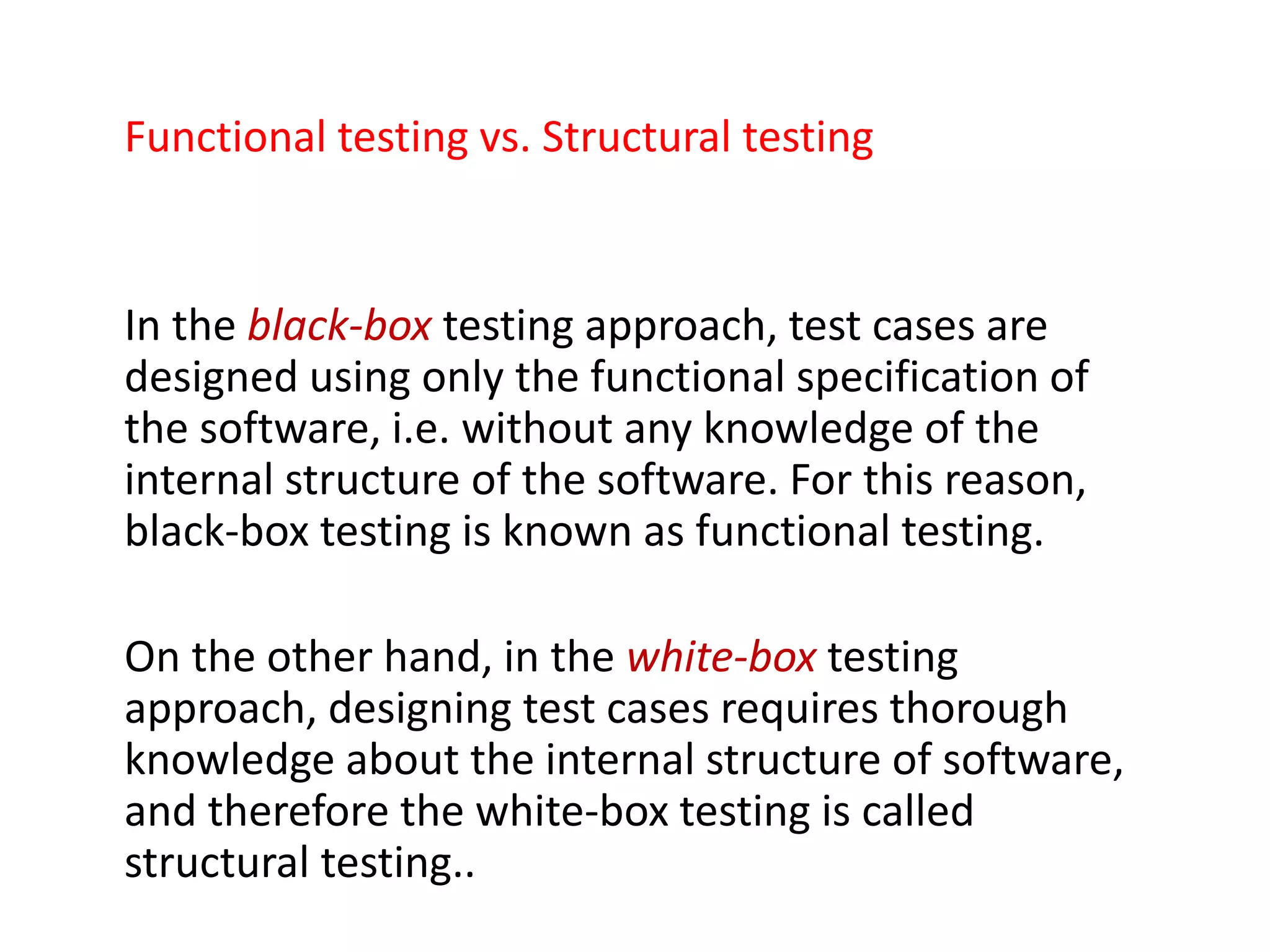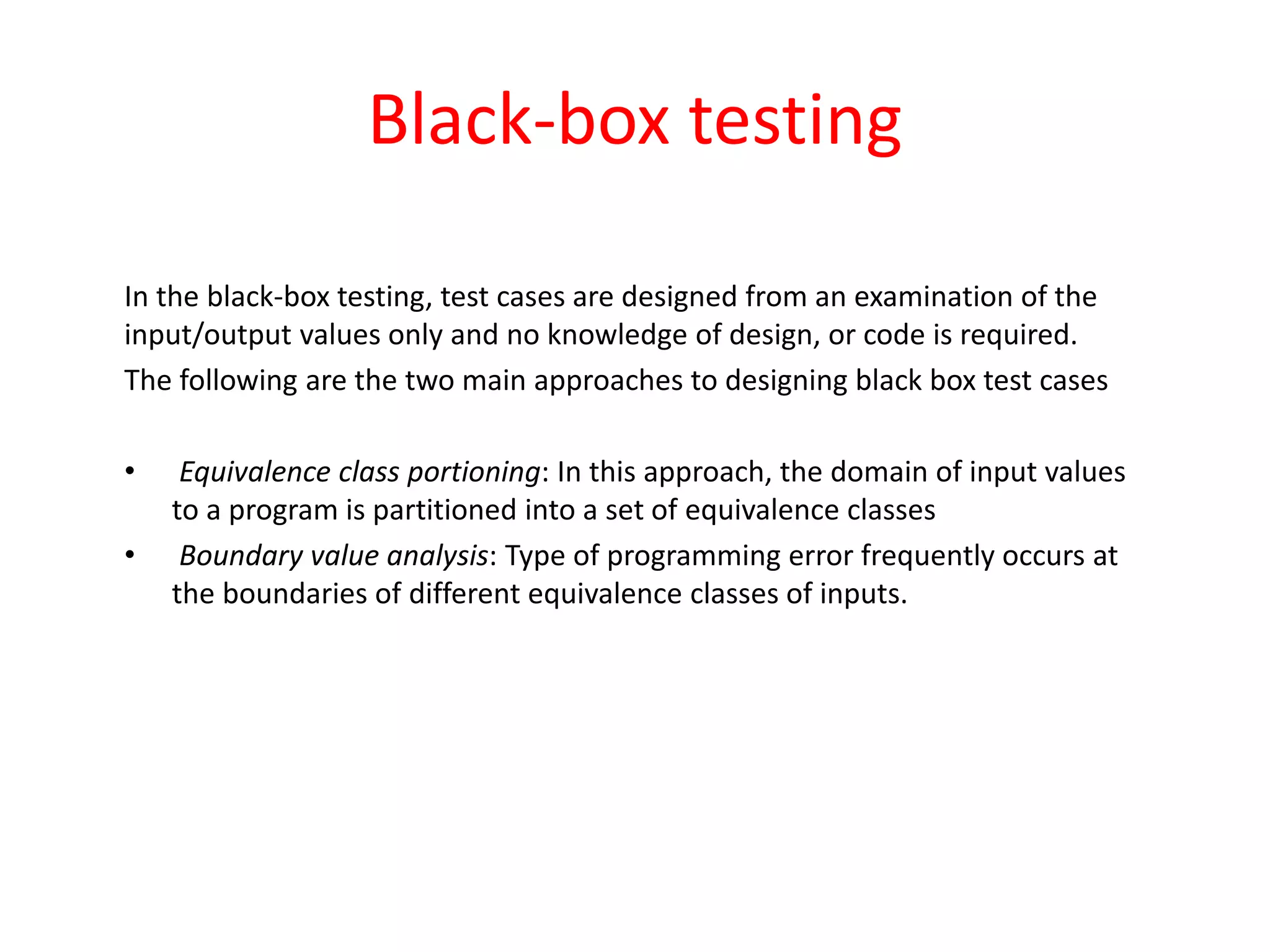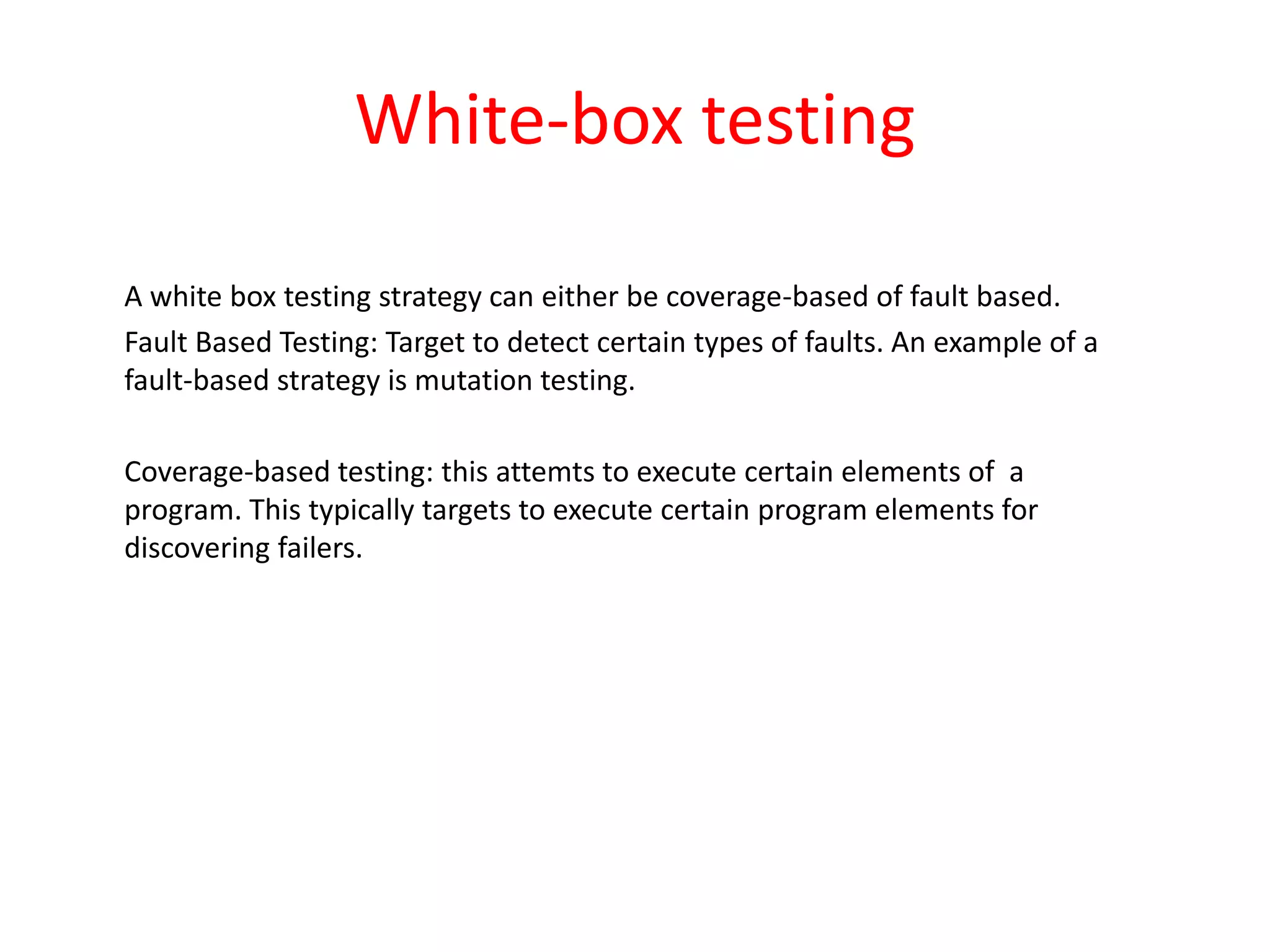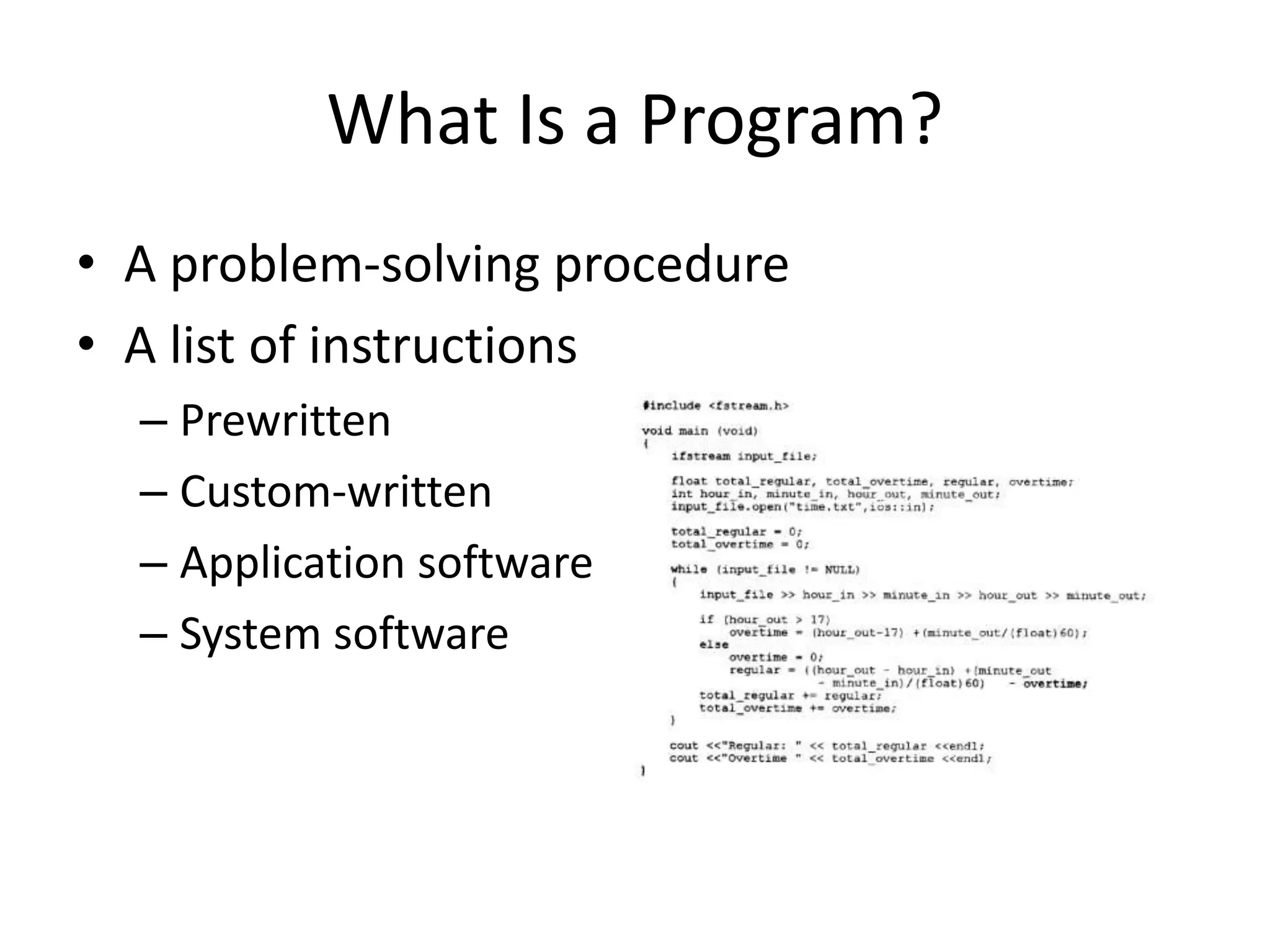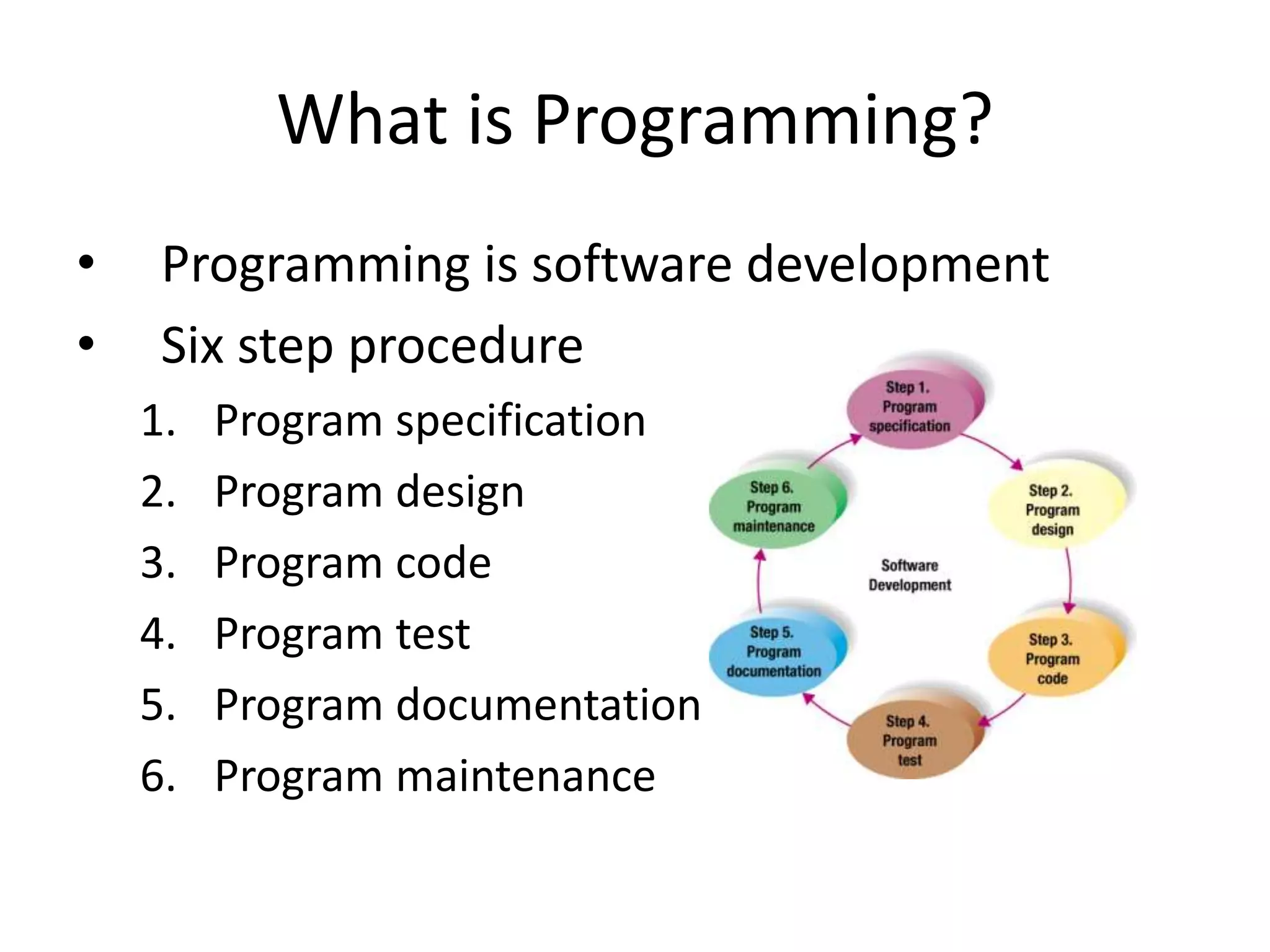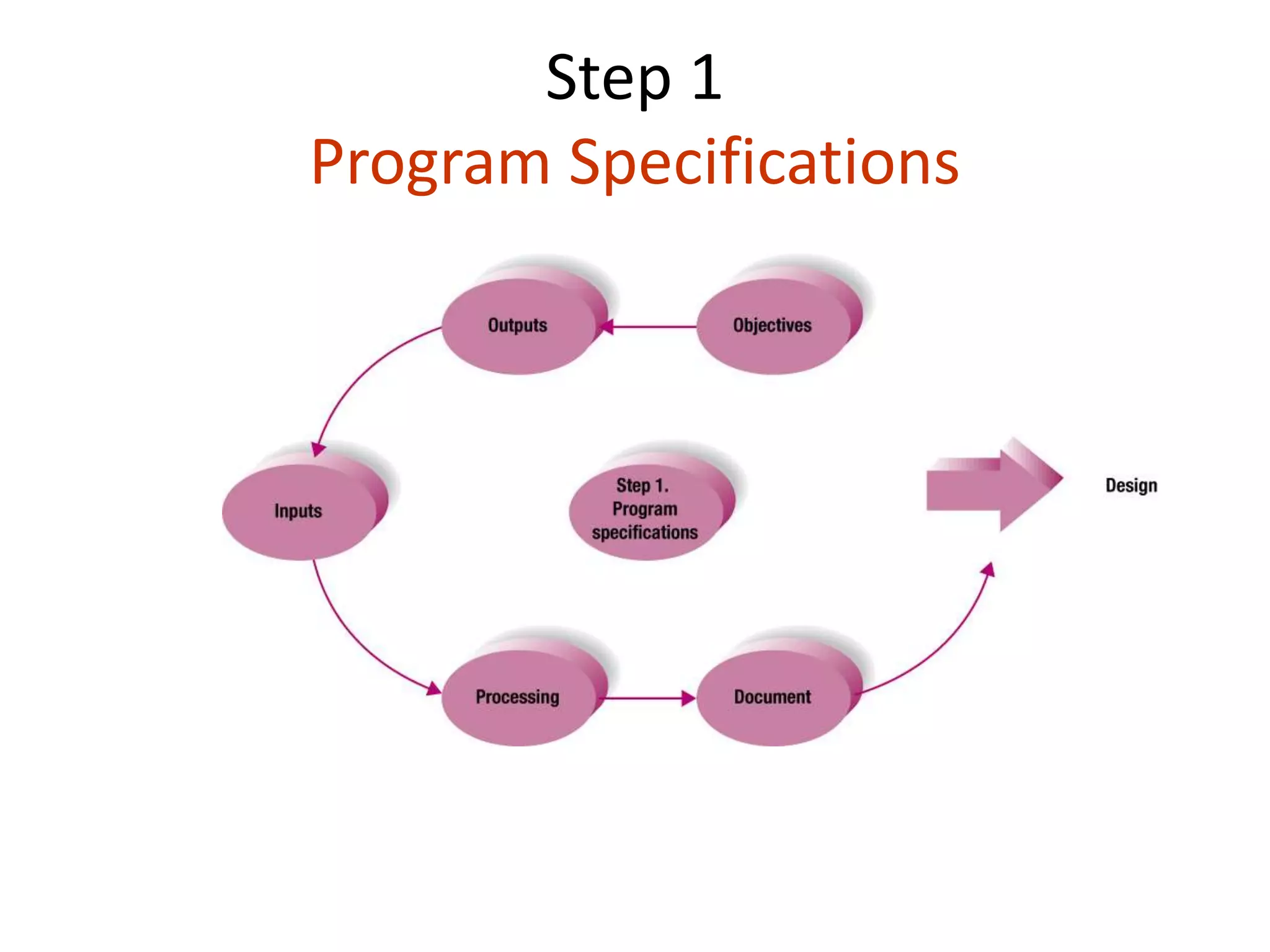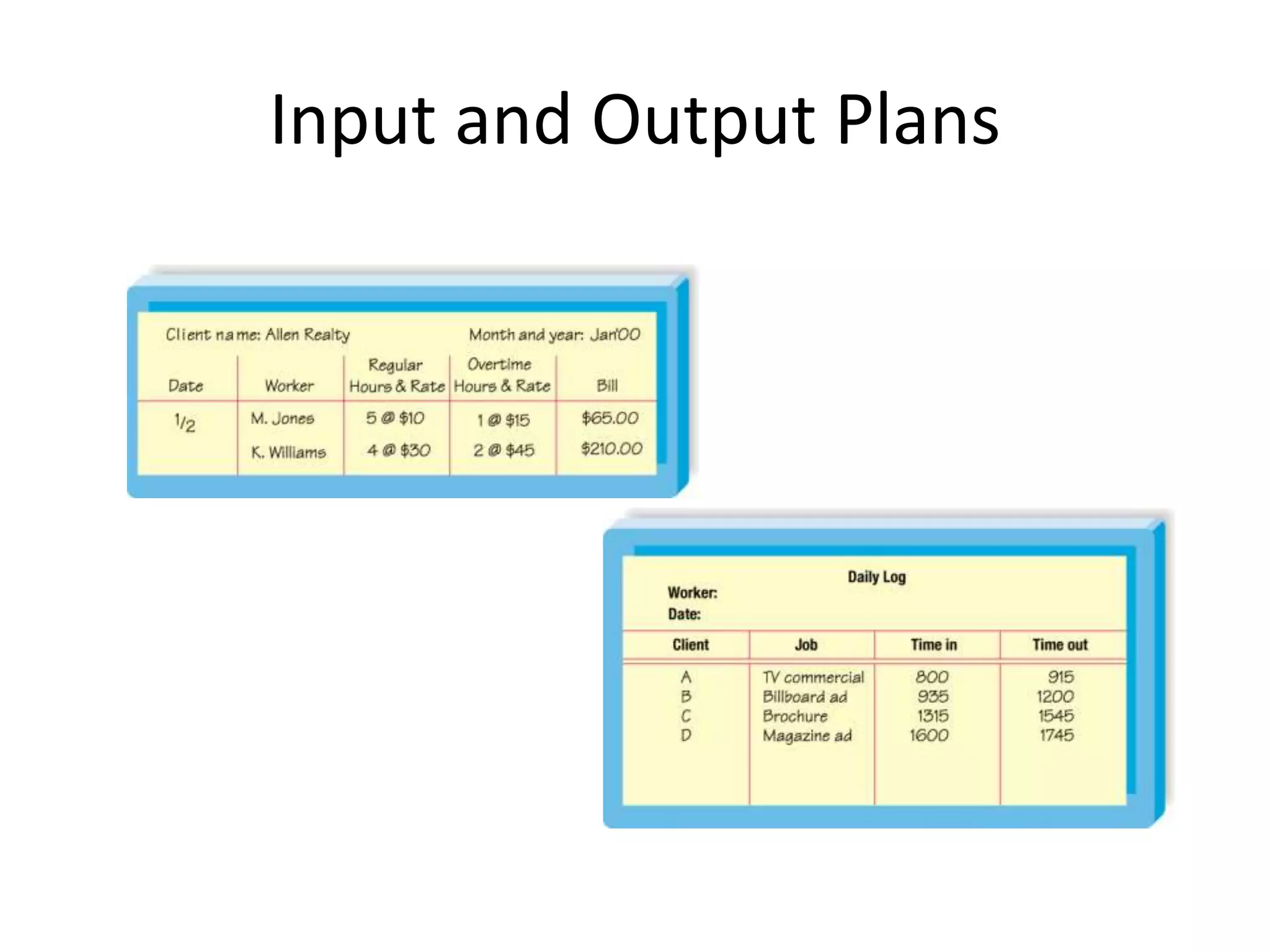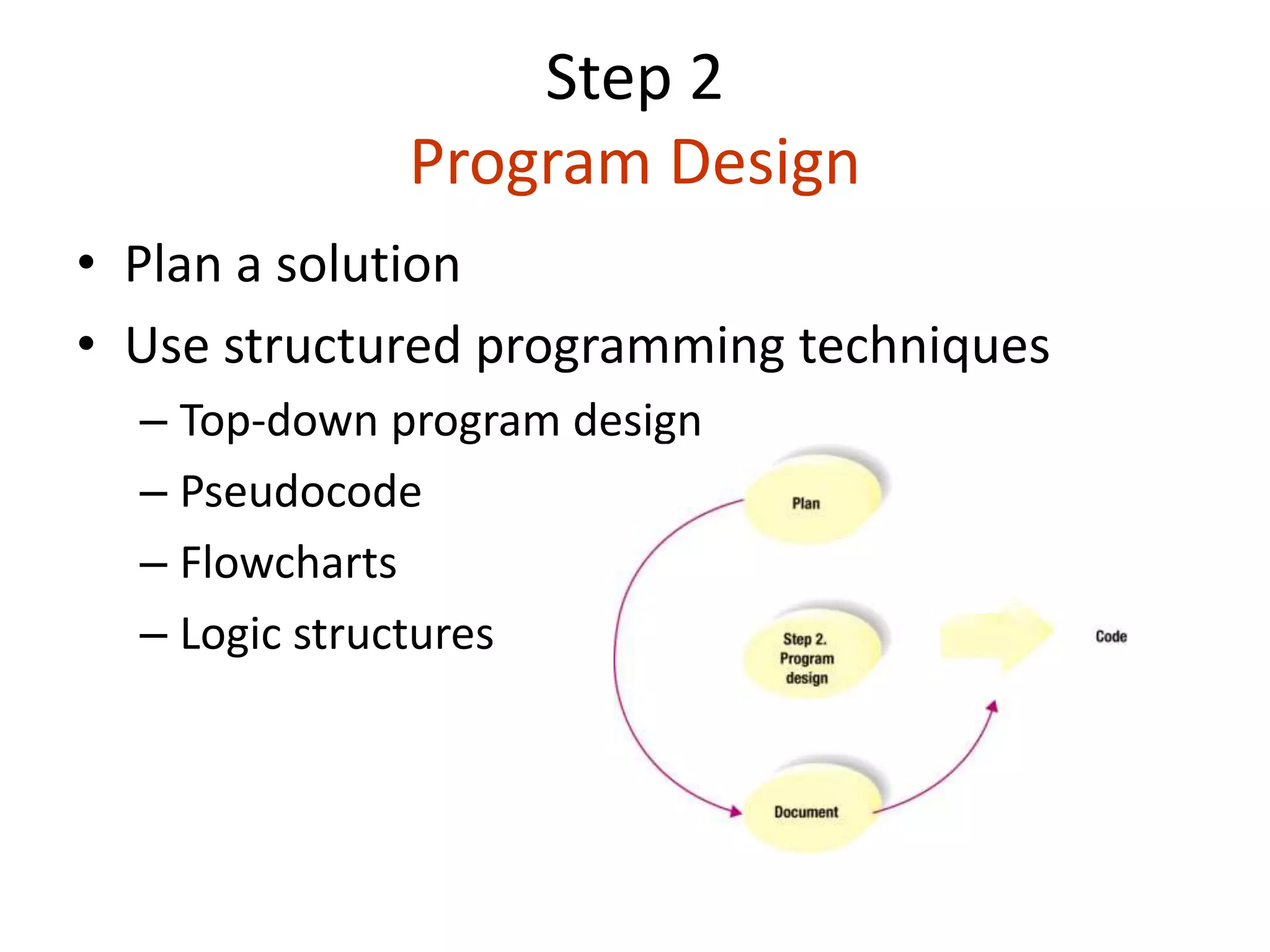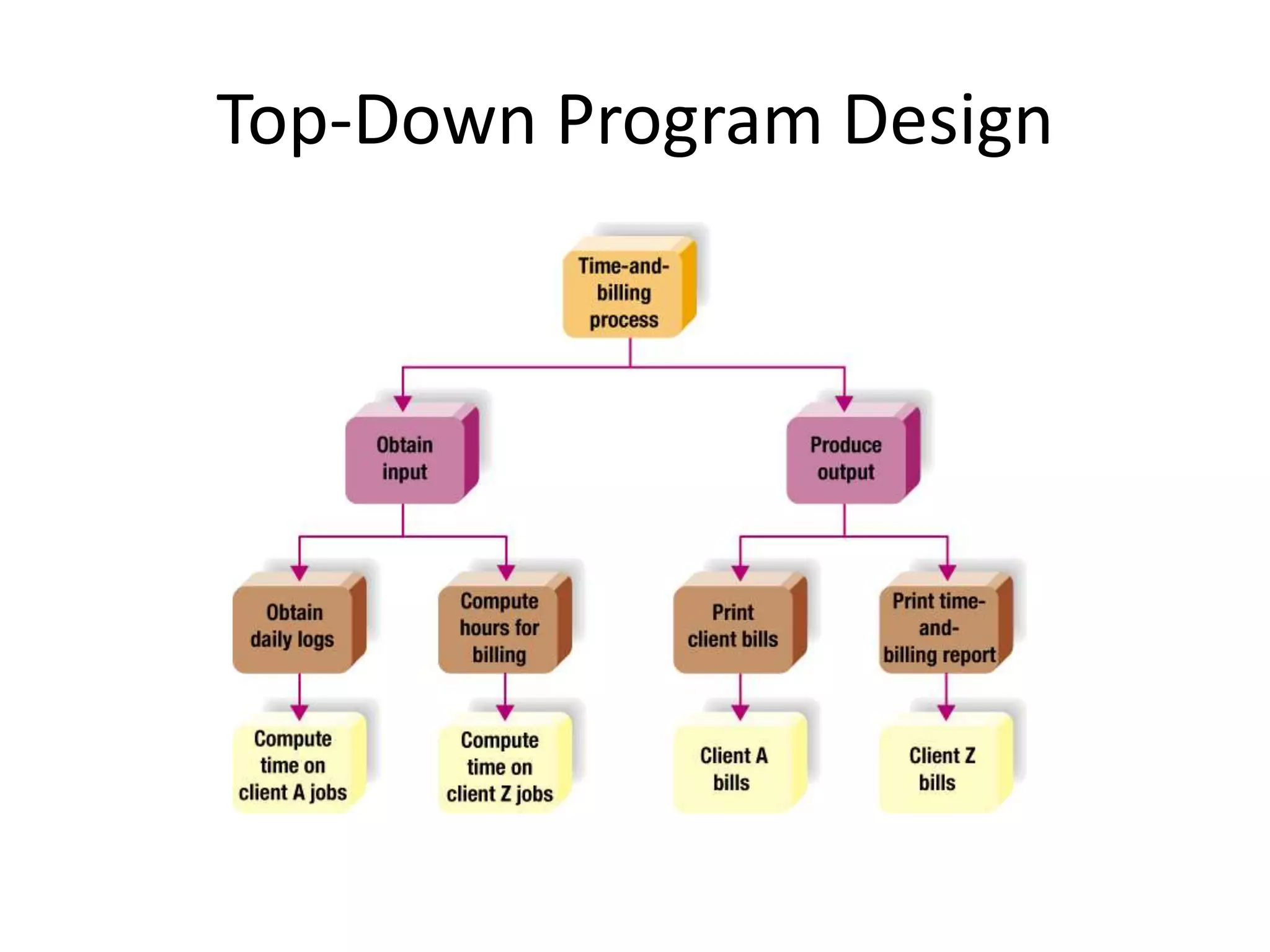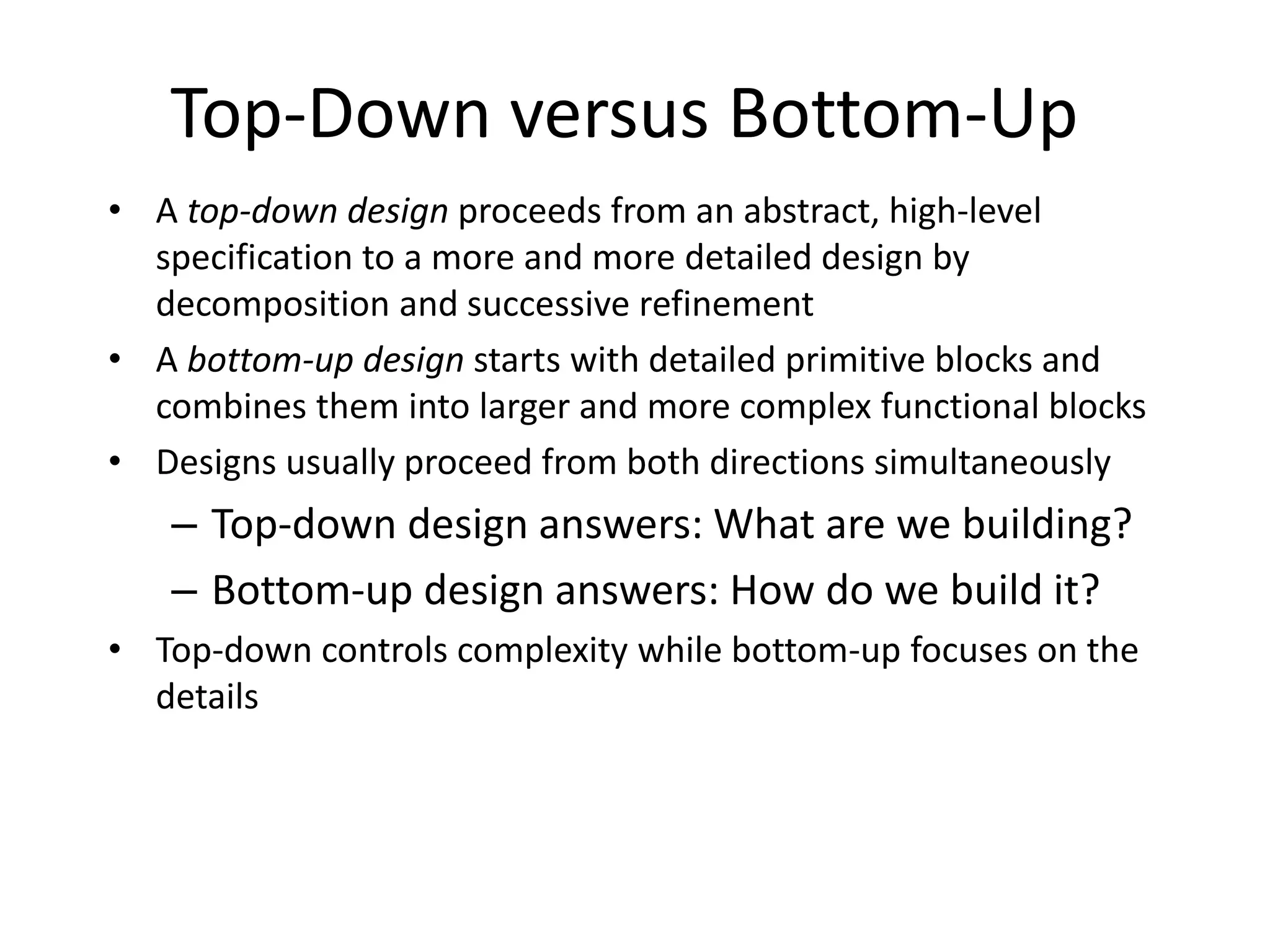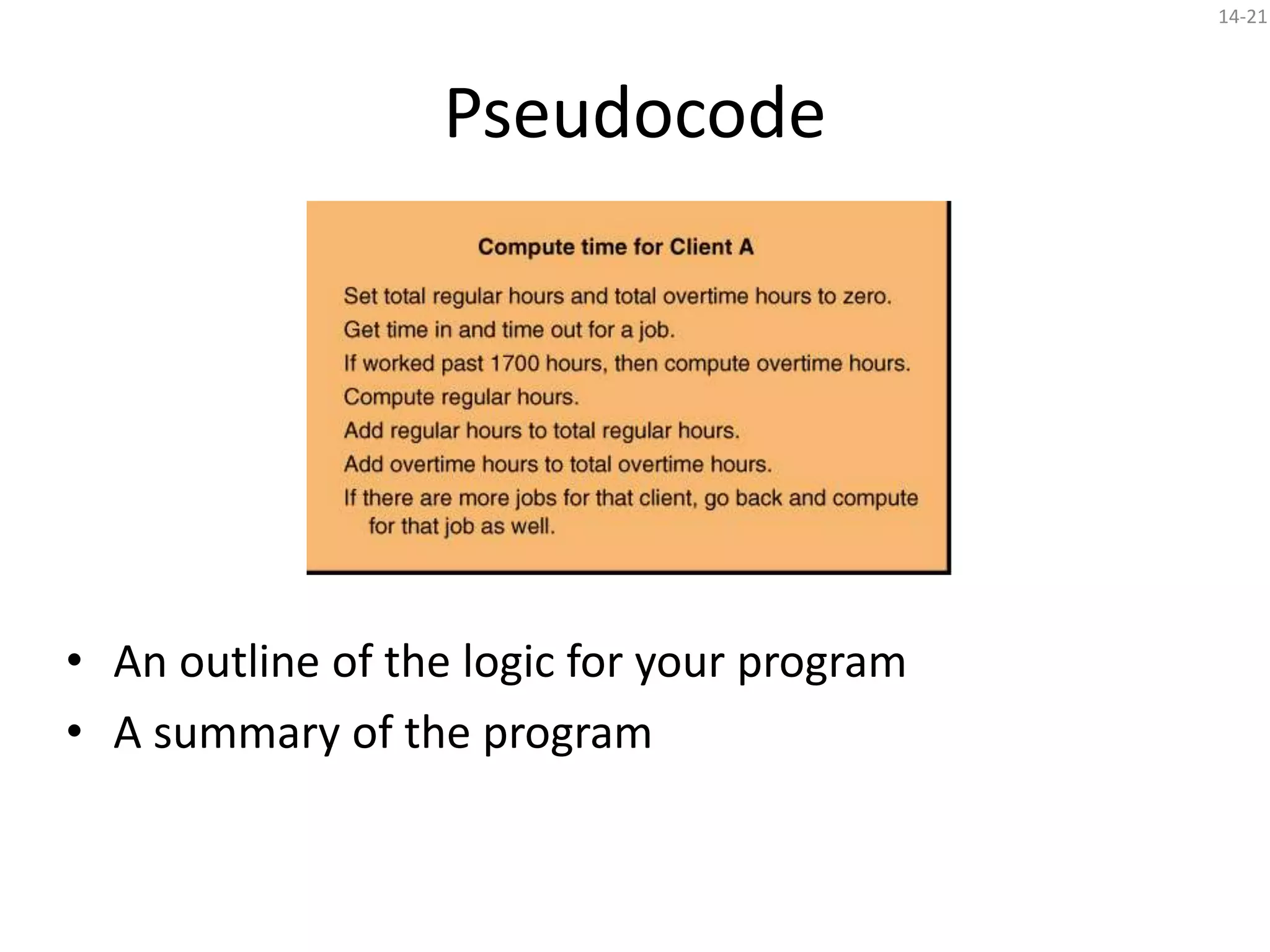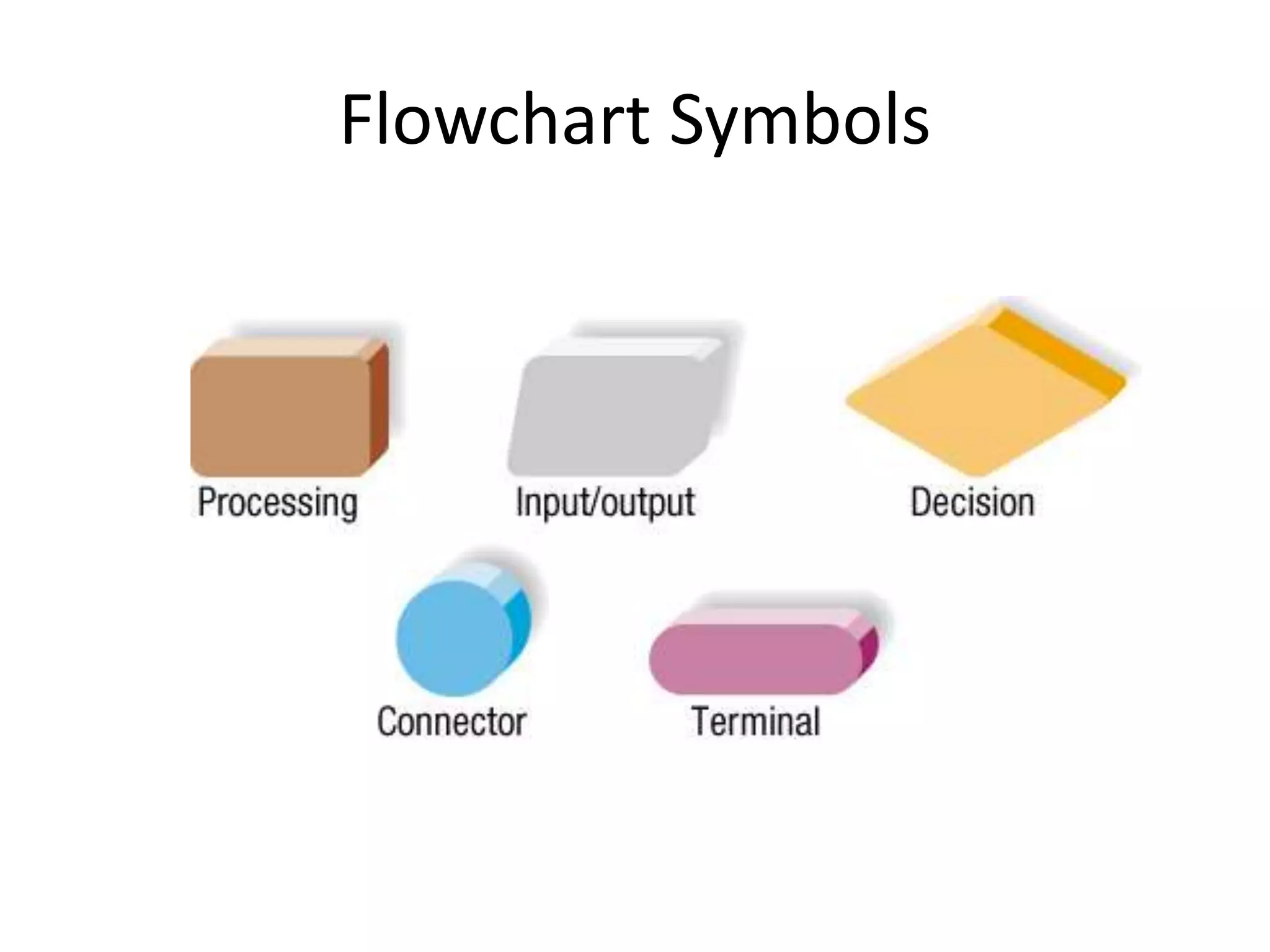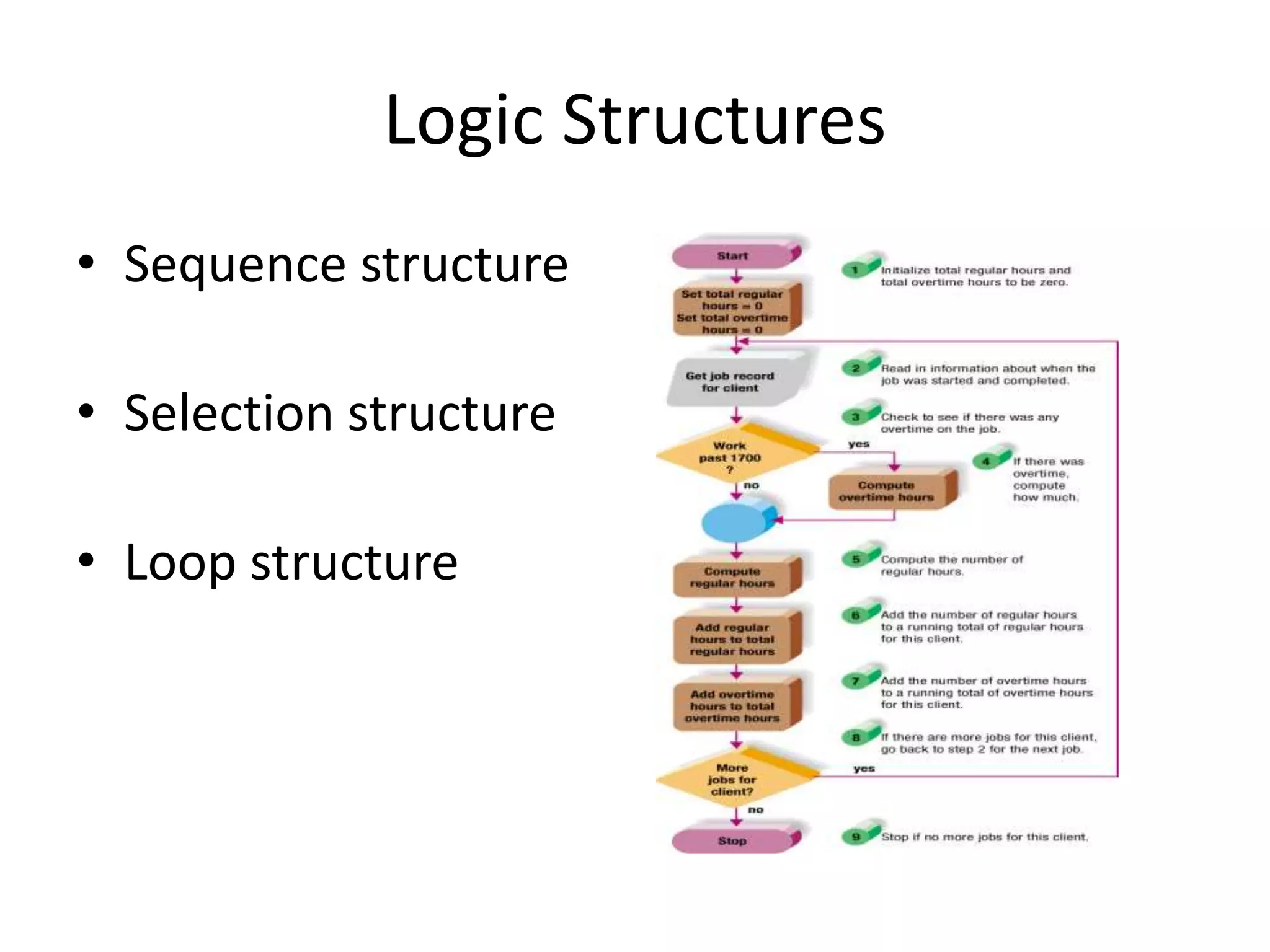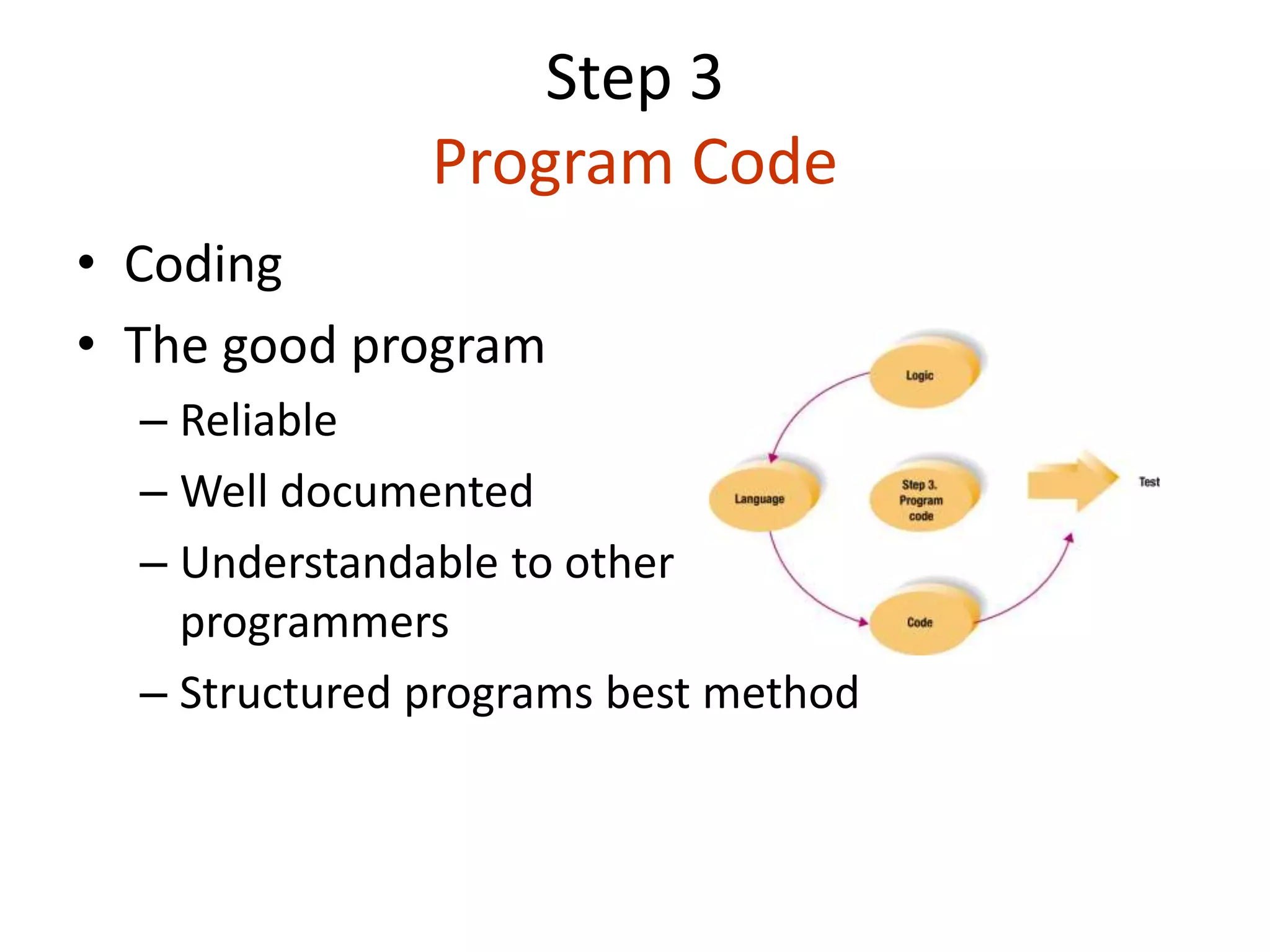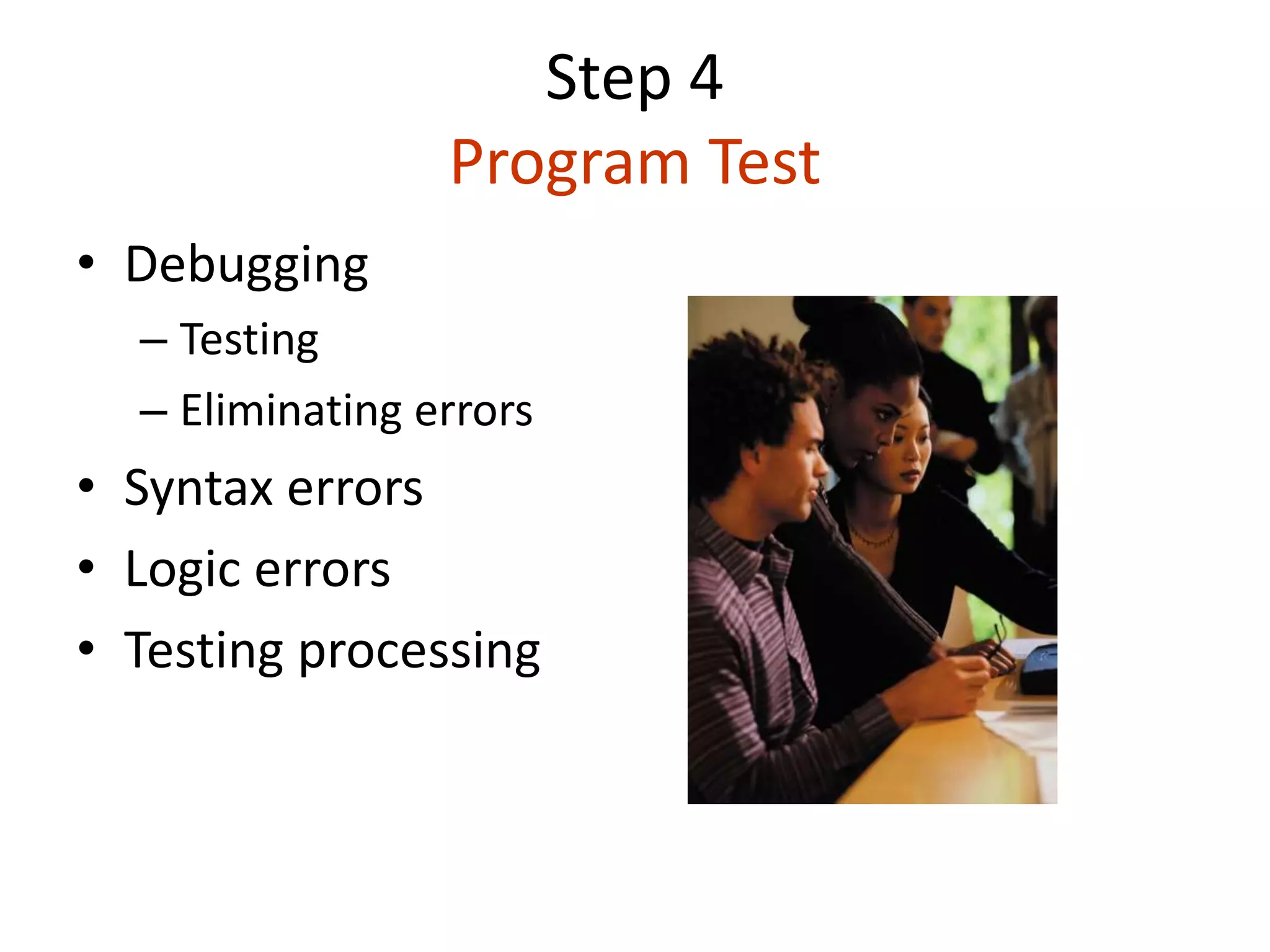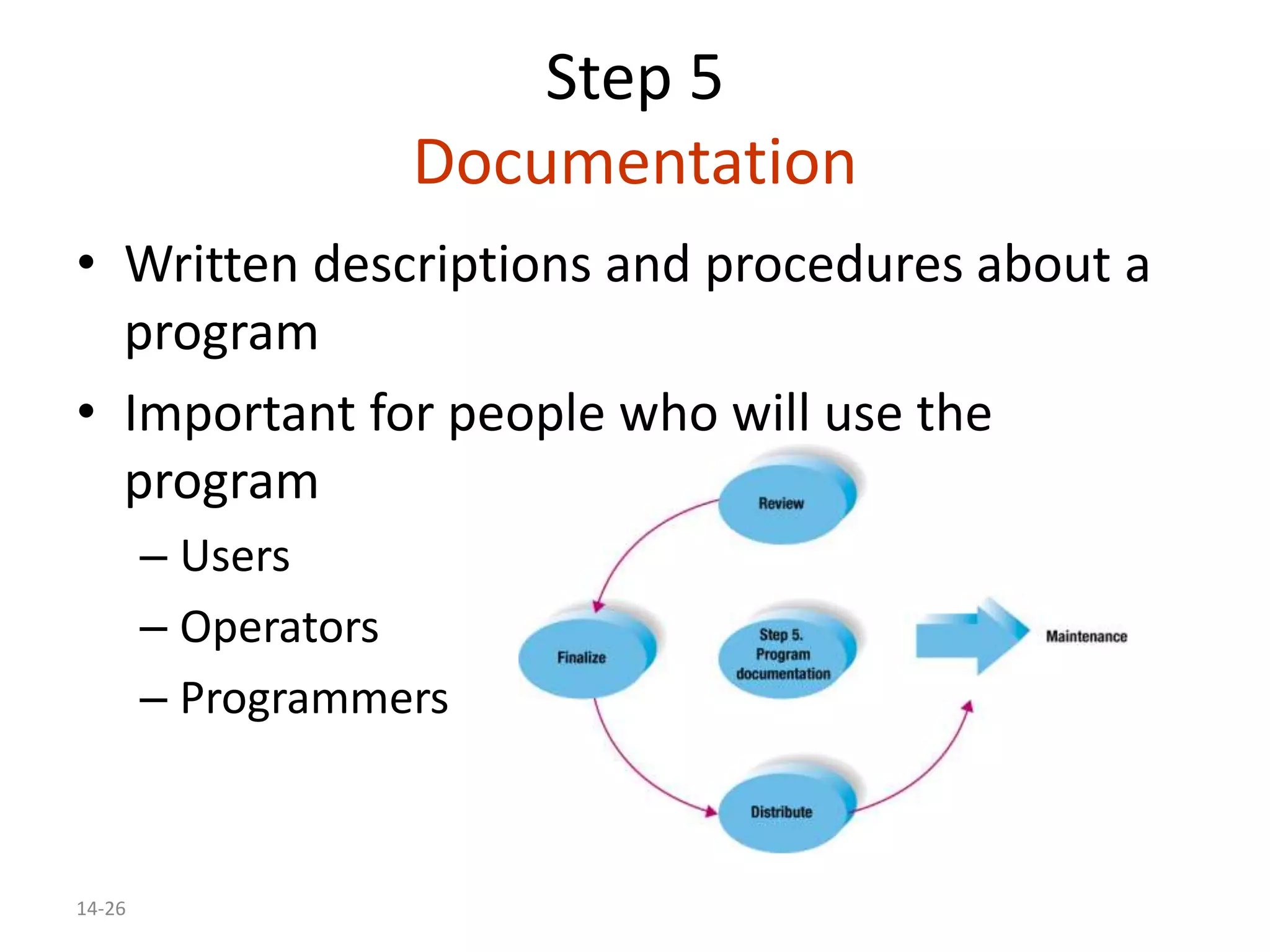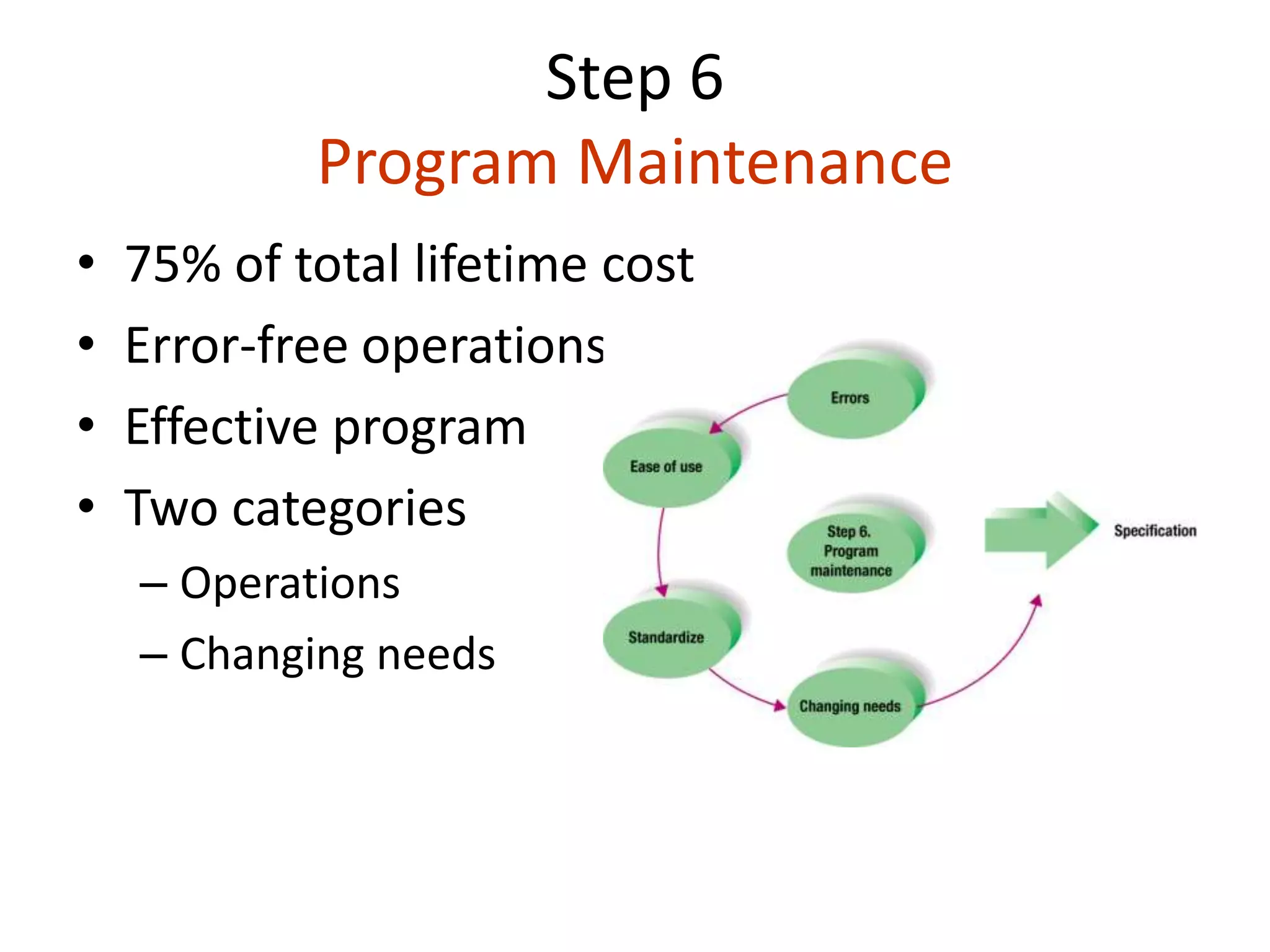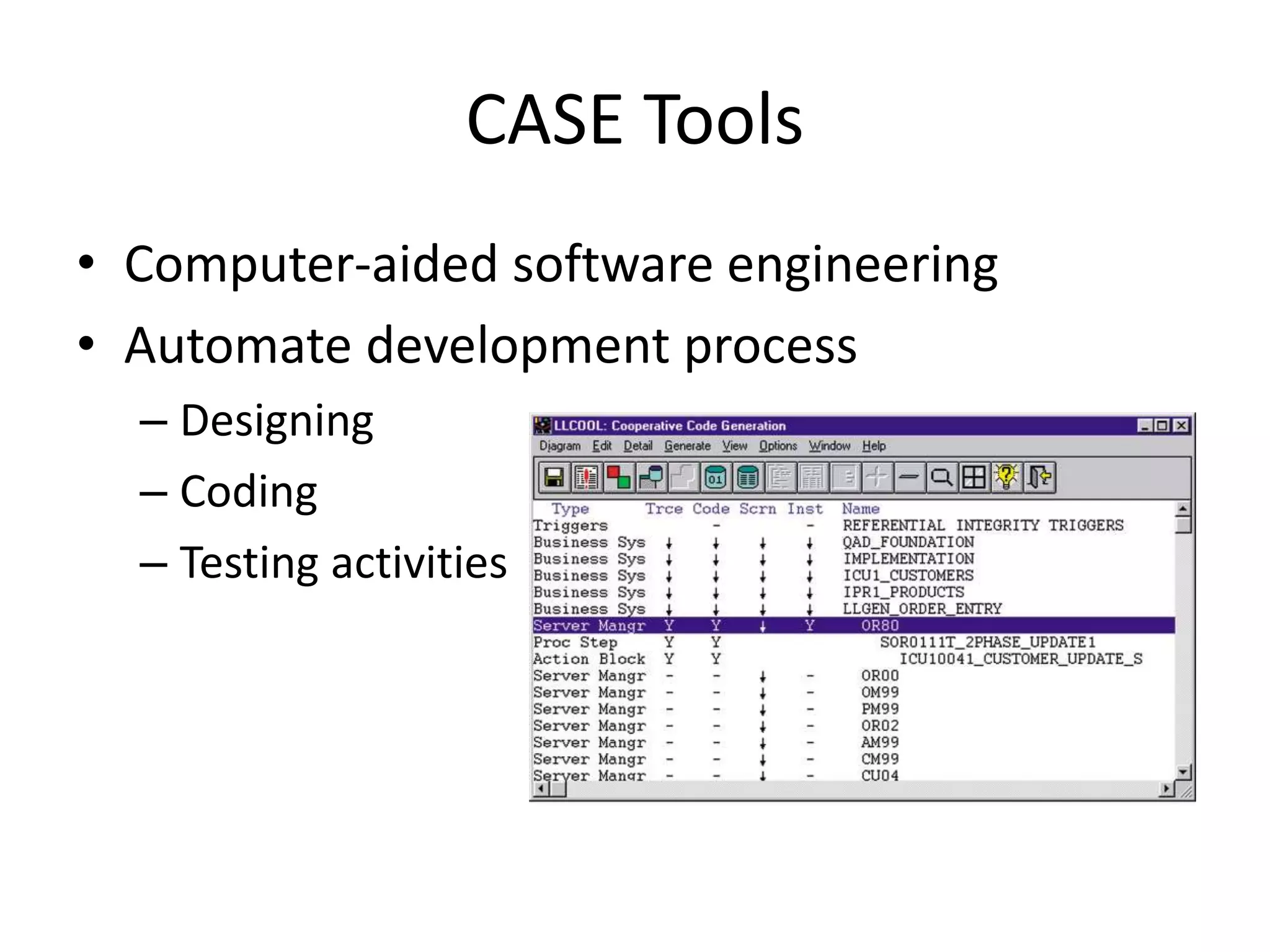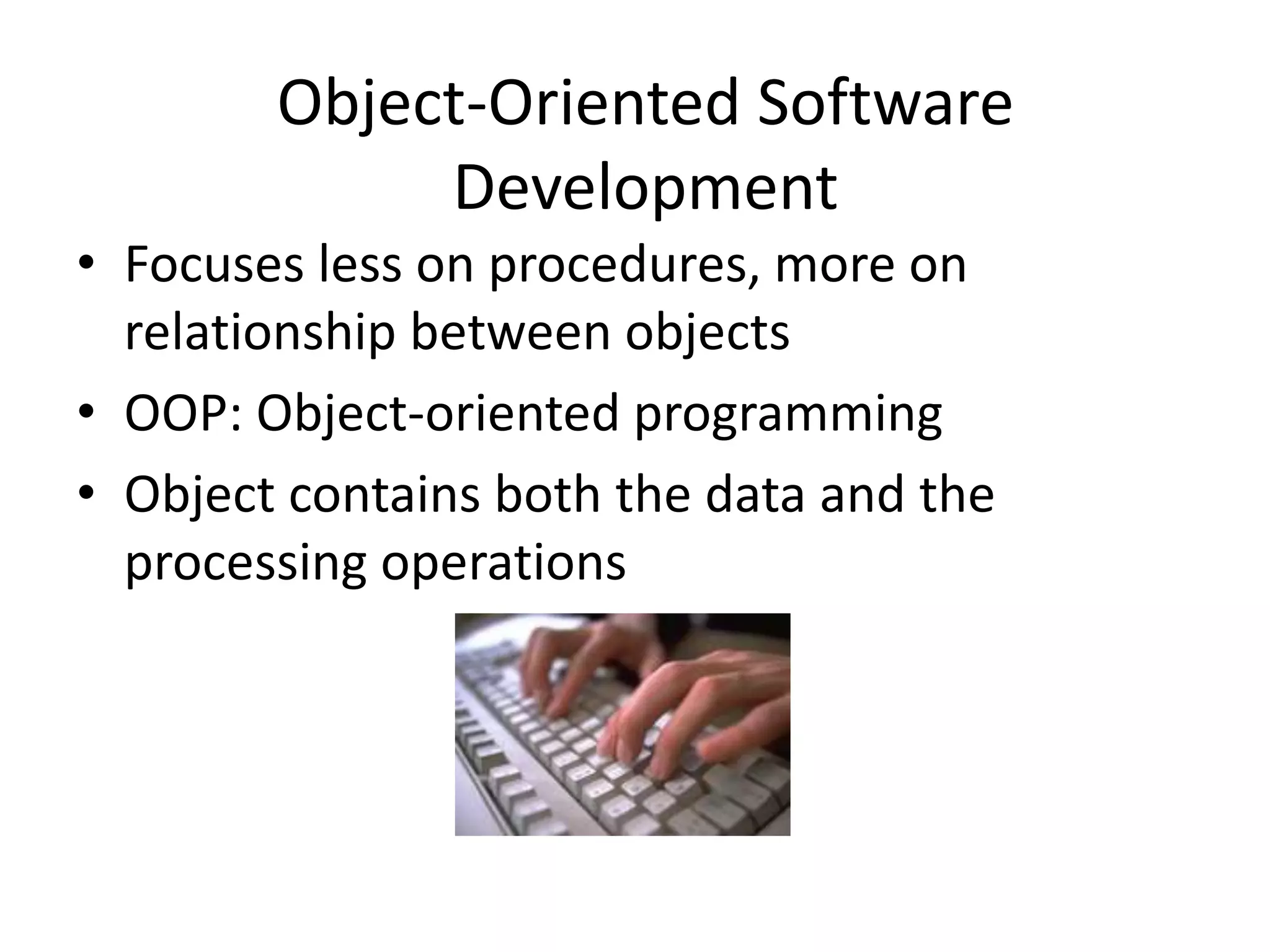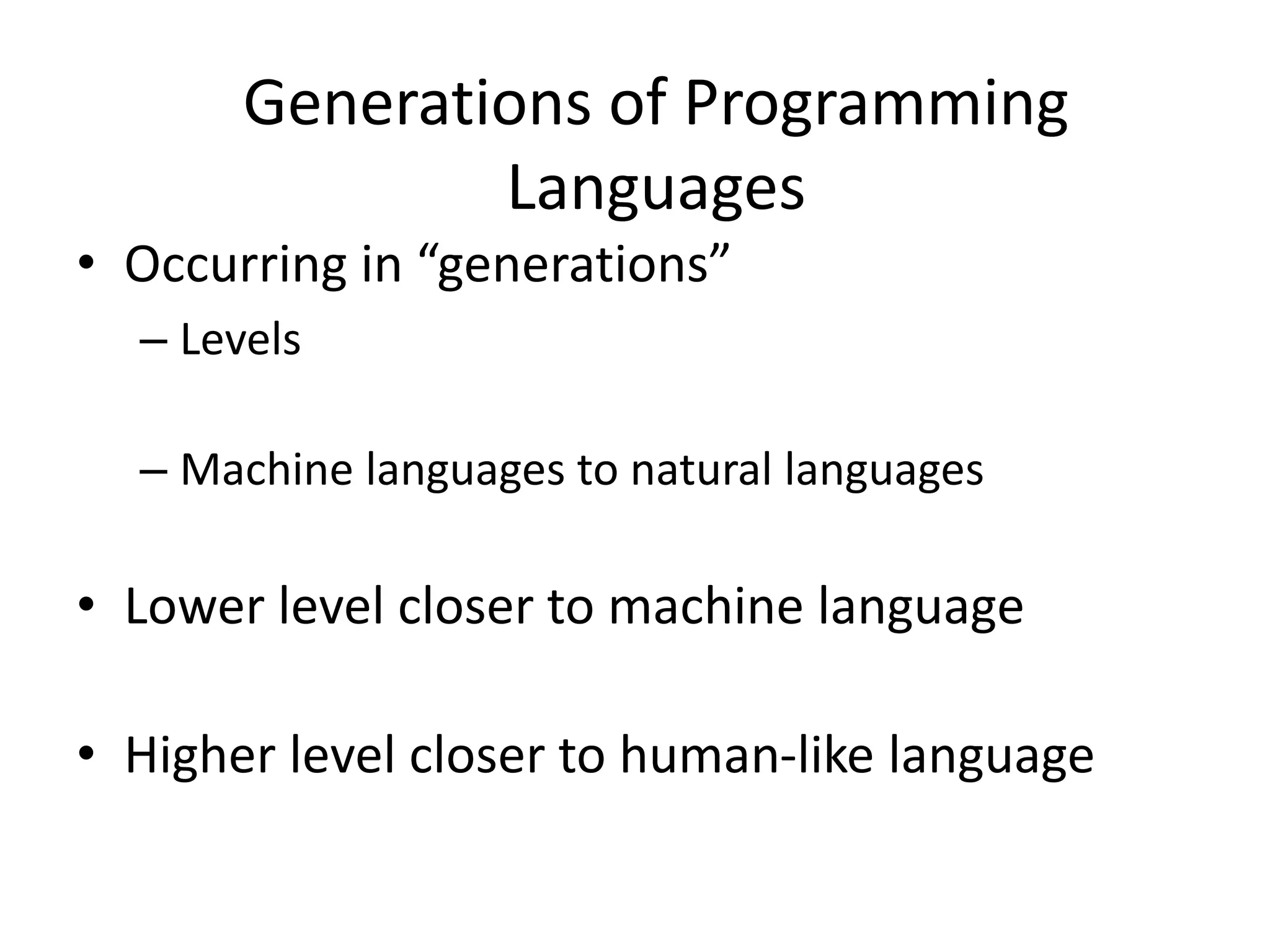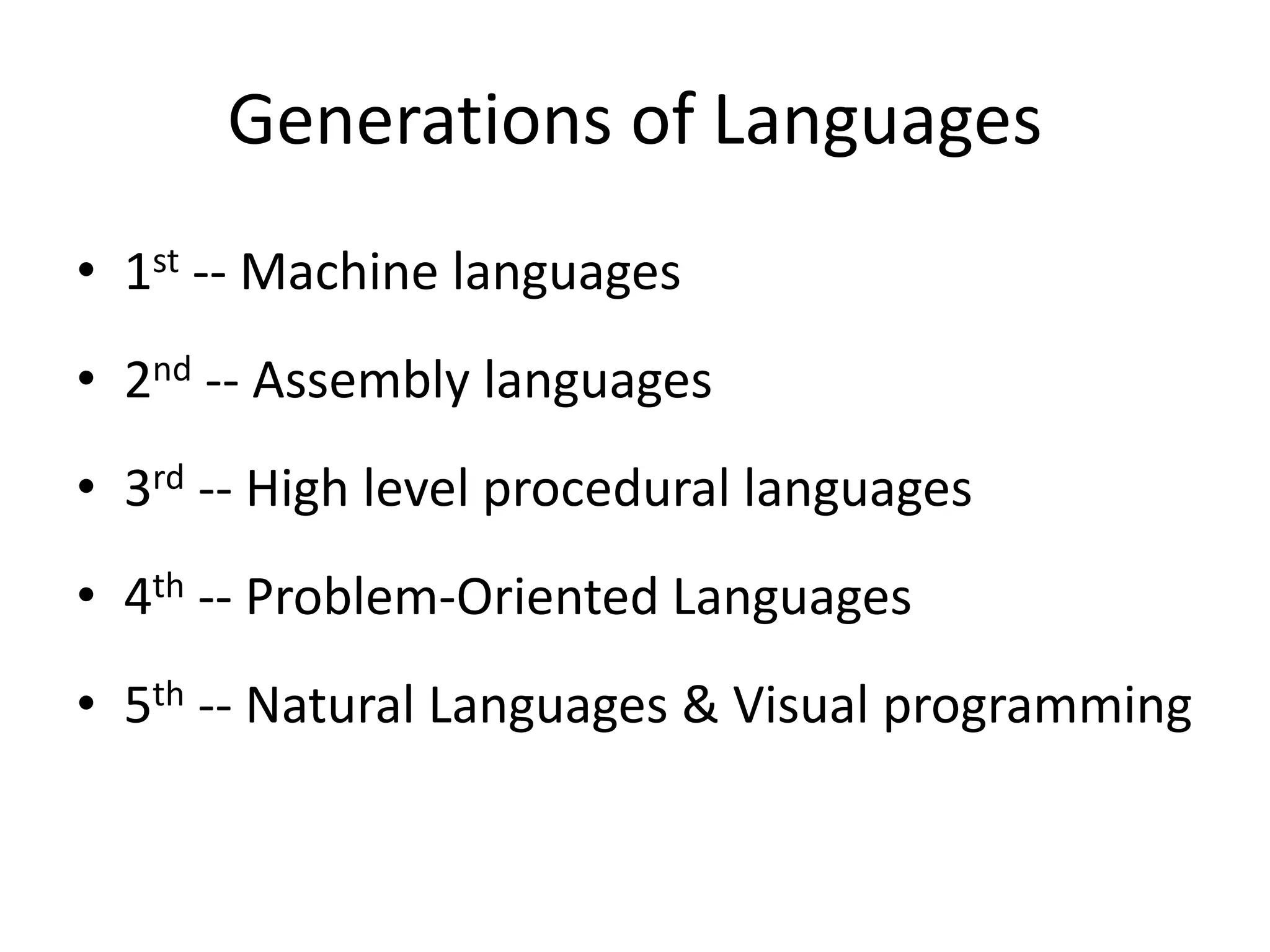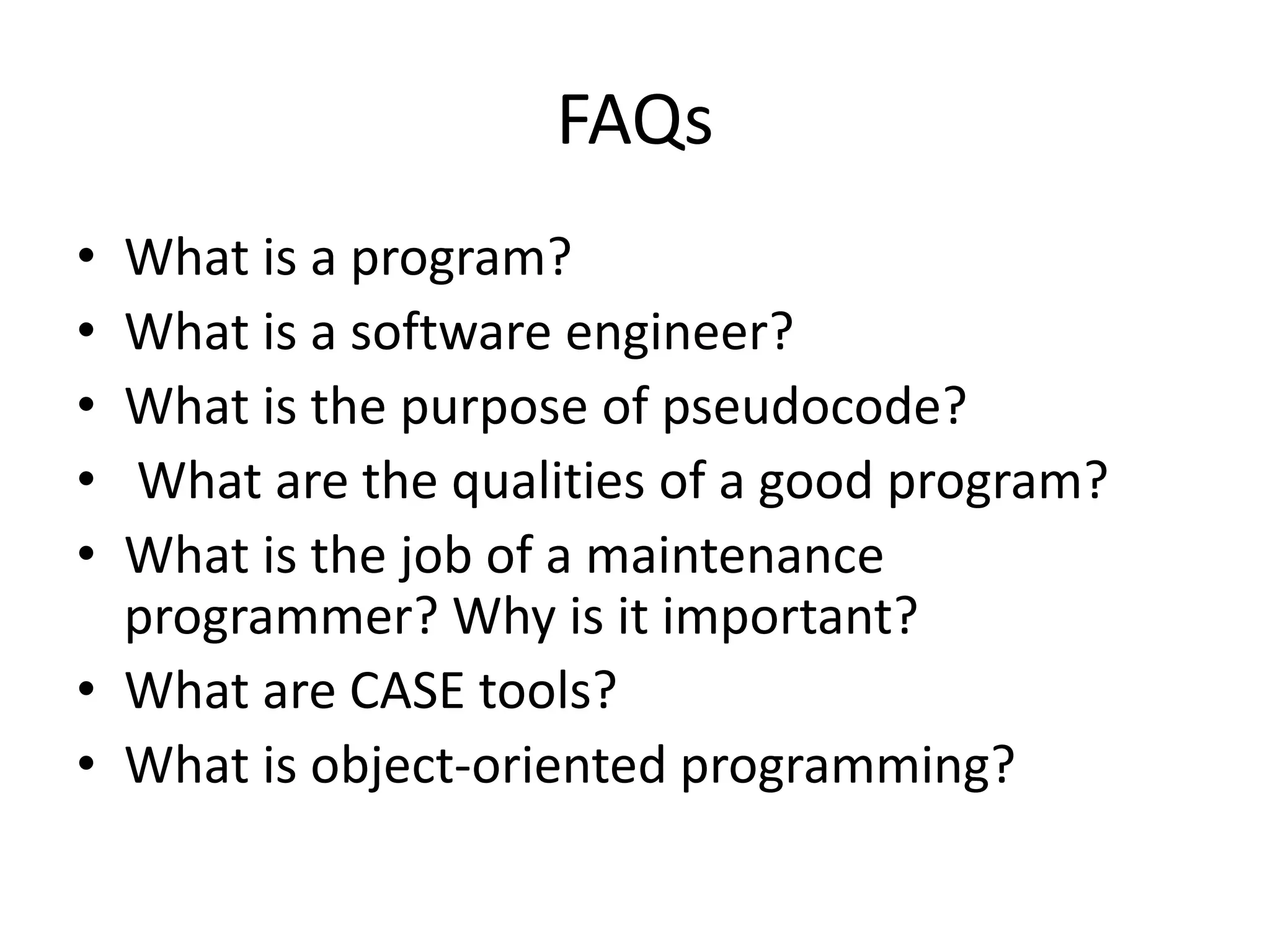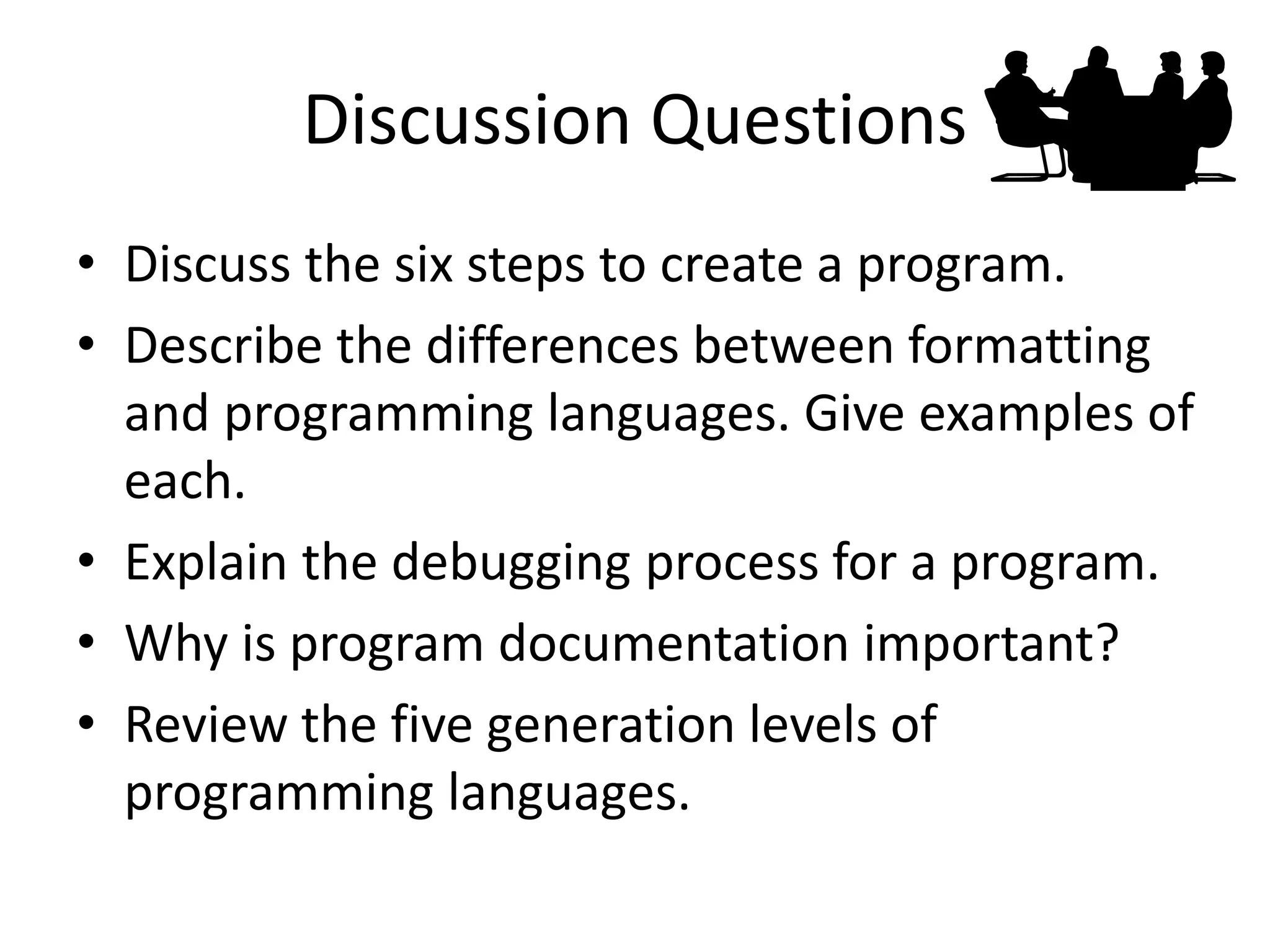The document covers essential topics in software engineering, particularly focusing on coding practices, problem-solving, and software testing methodologies. It highlights the importance of coding standards, documentation, and the structured programming process, along with differences between black-box and white-box testing. Additionally, it outlines the programming lifecycle, including specification, design, coding, testing, documentation, and maintenance.
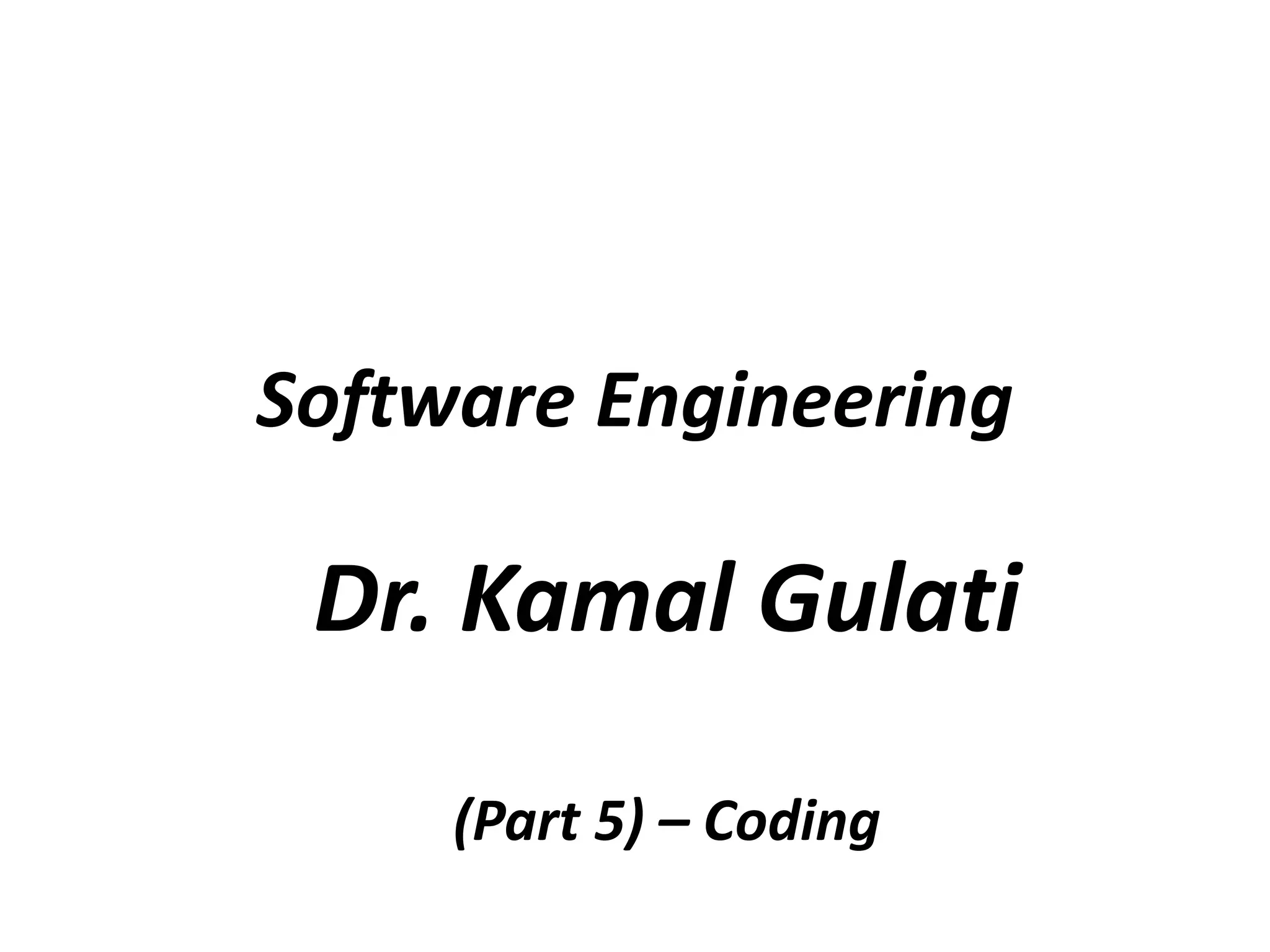
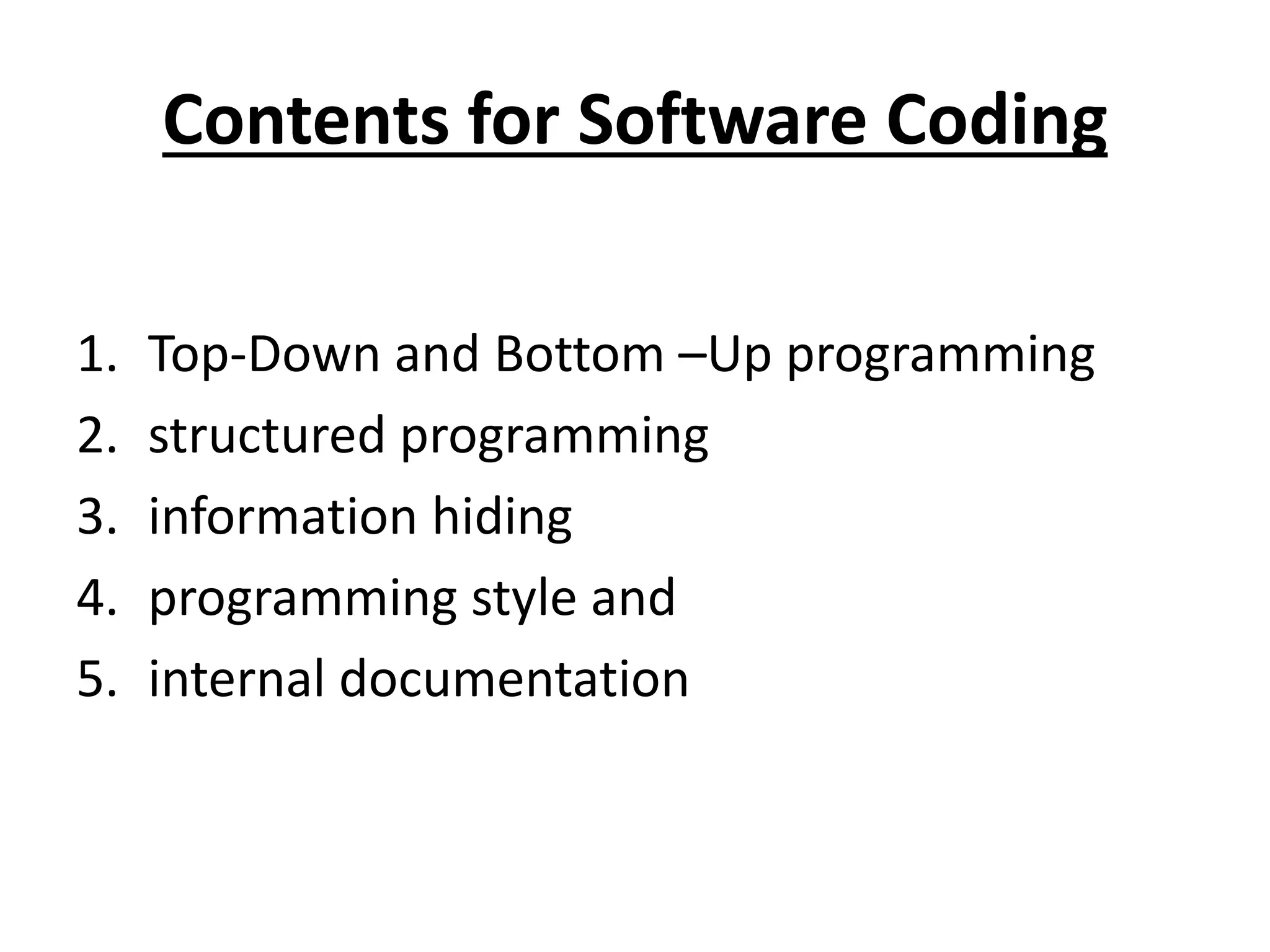
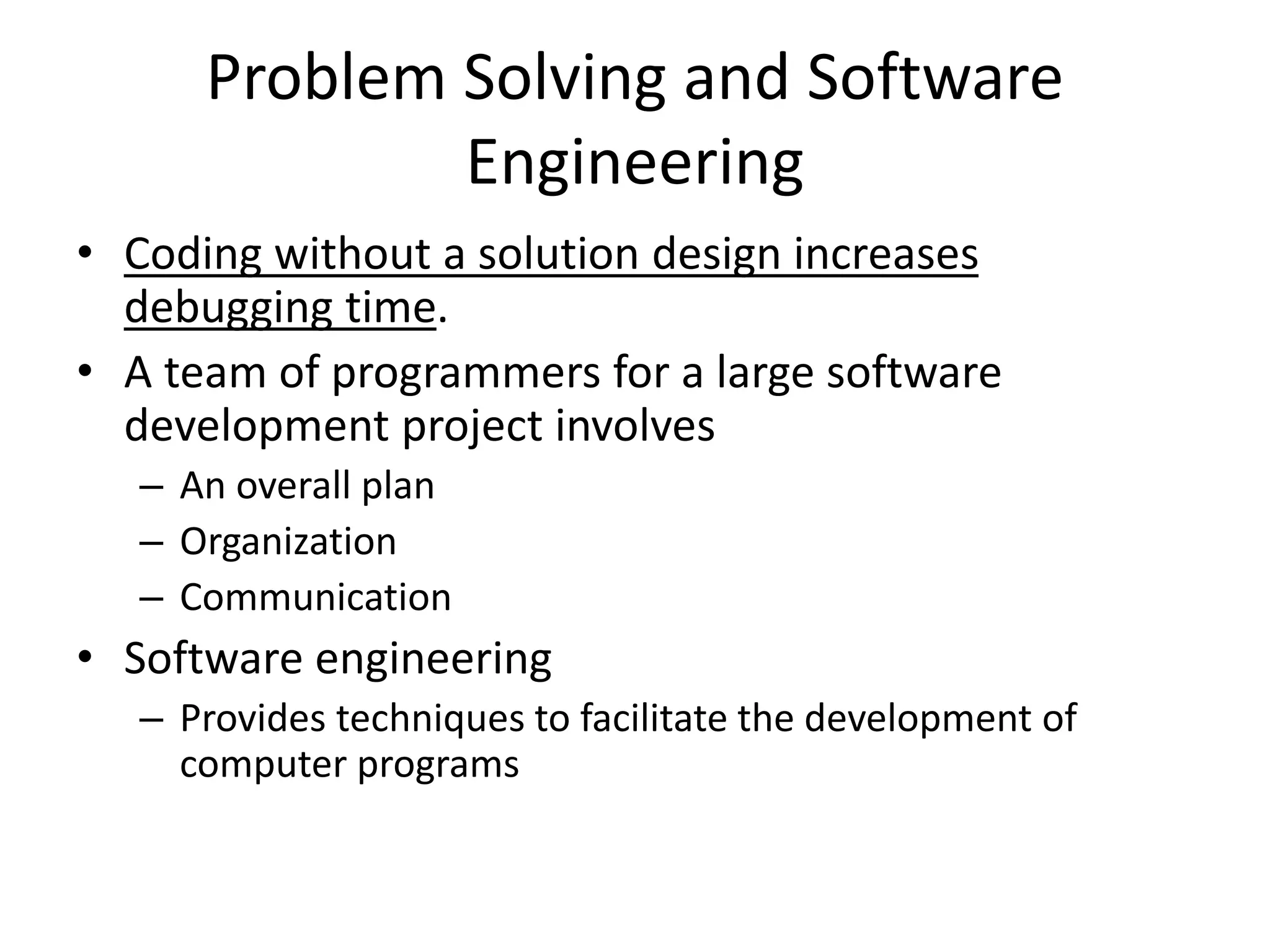
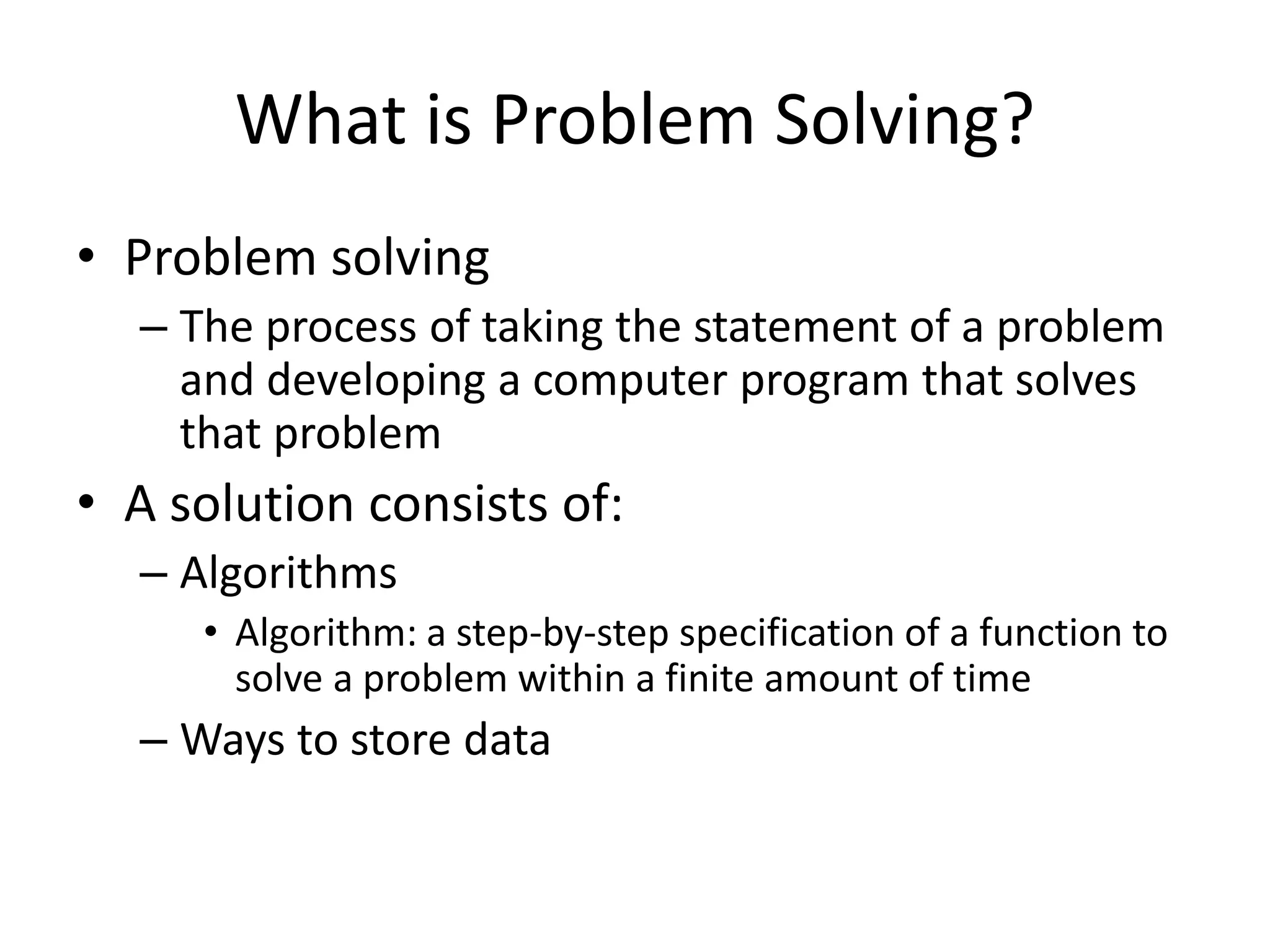
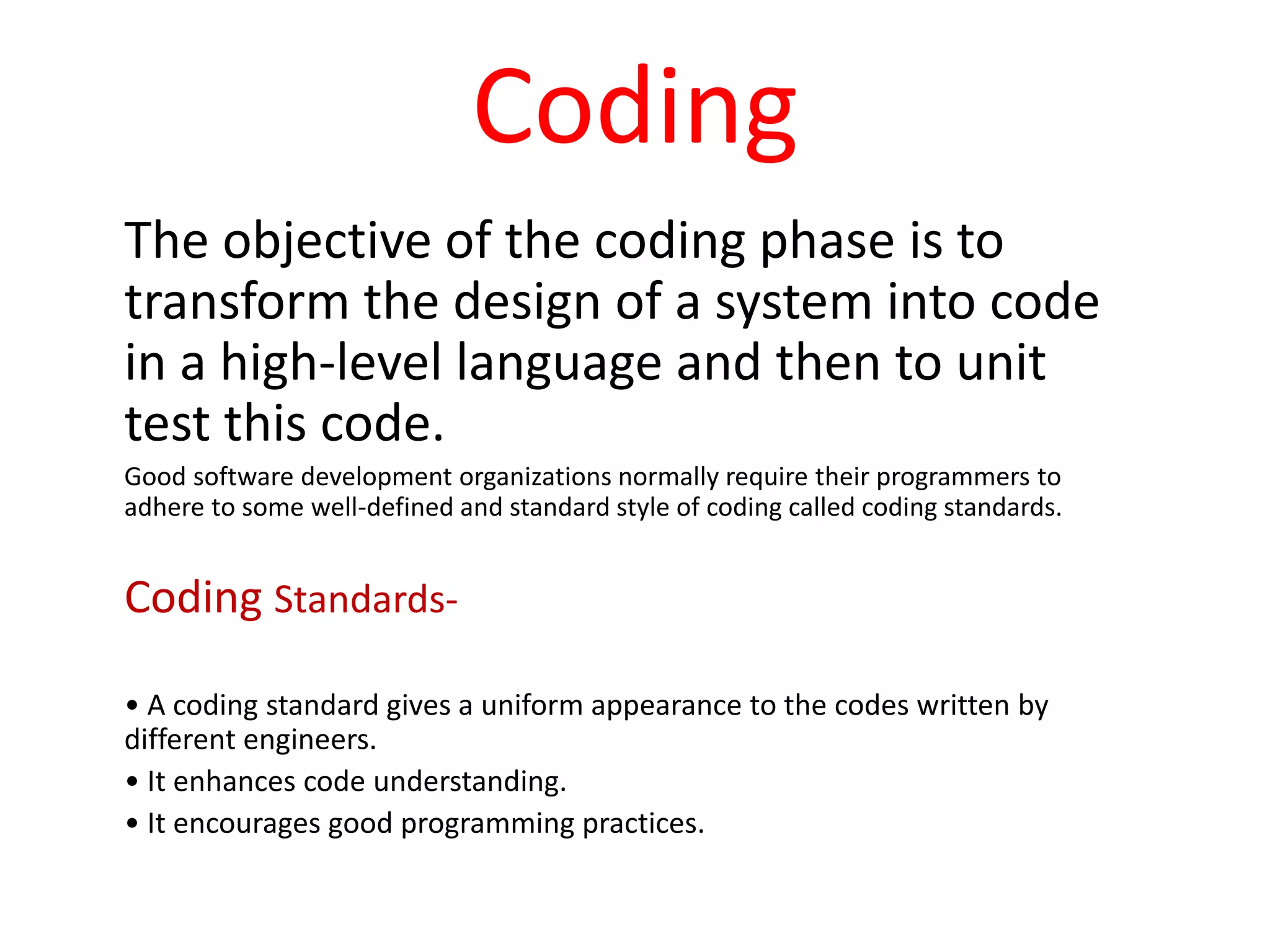
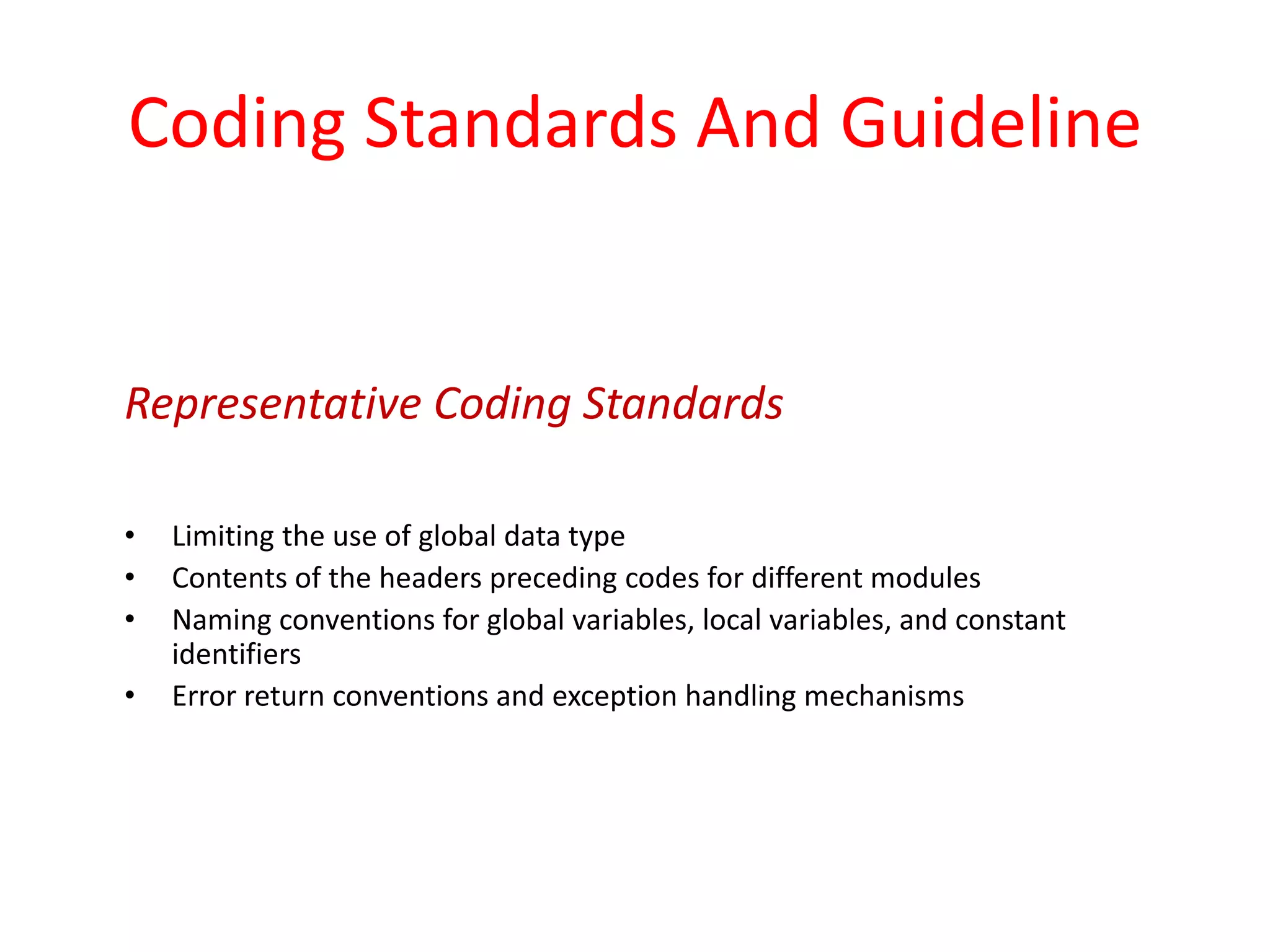
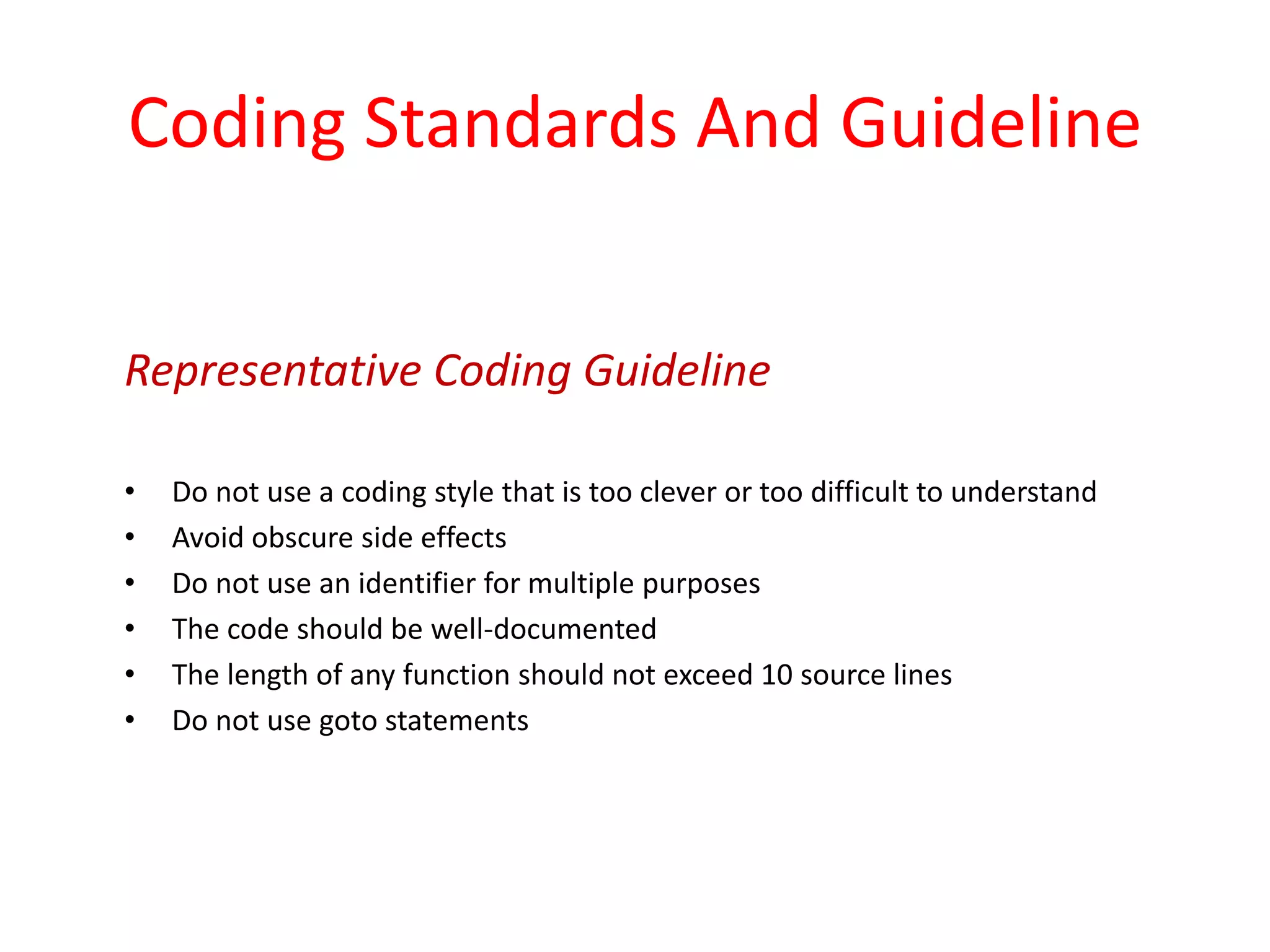
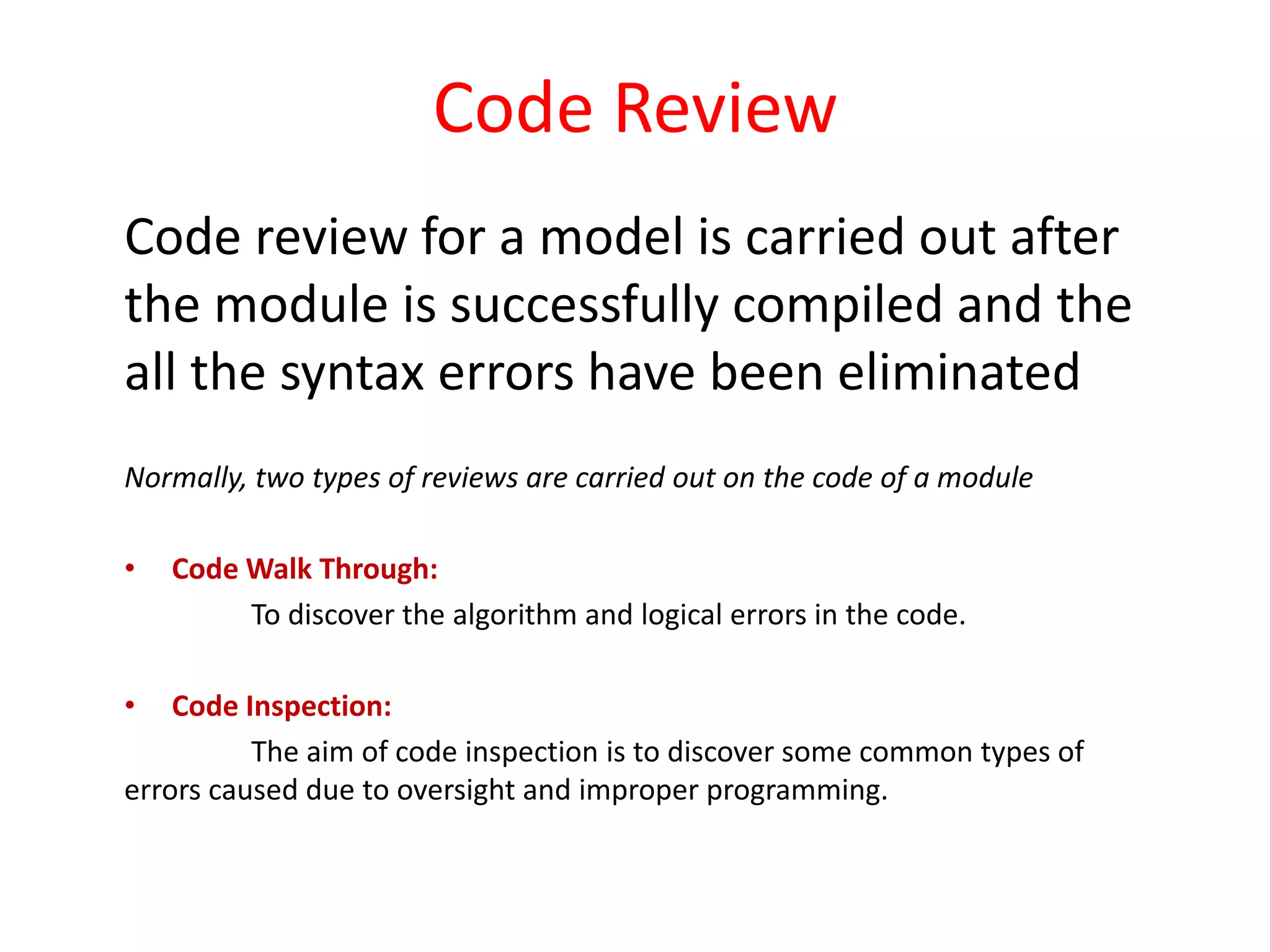
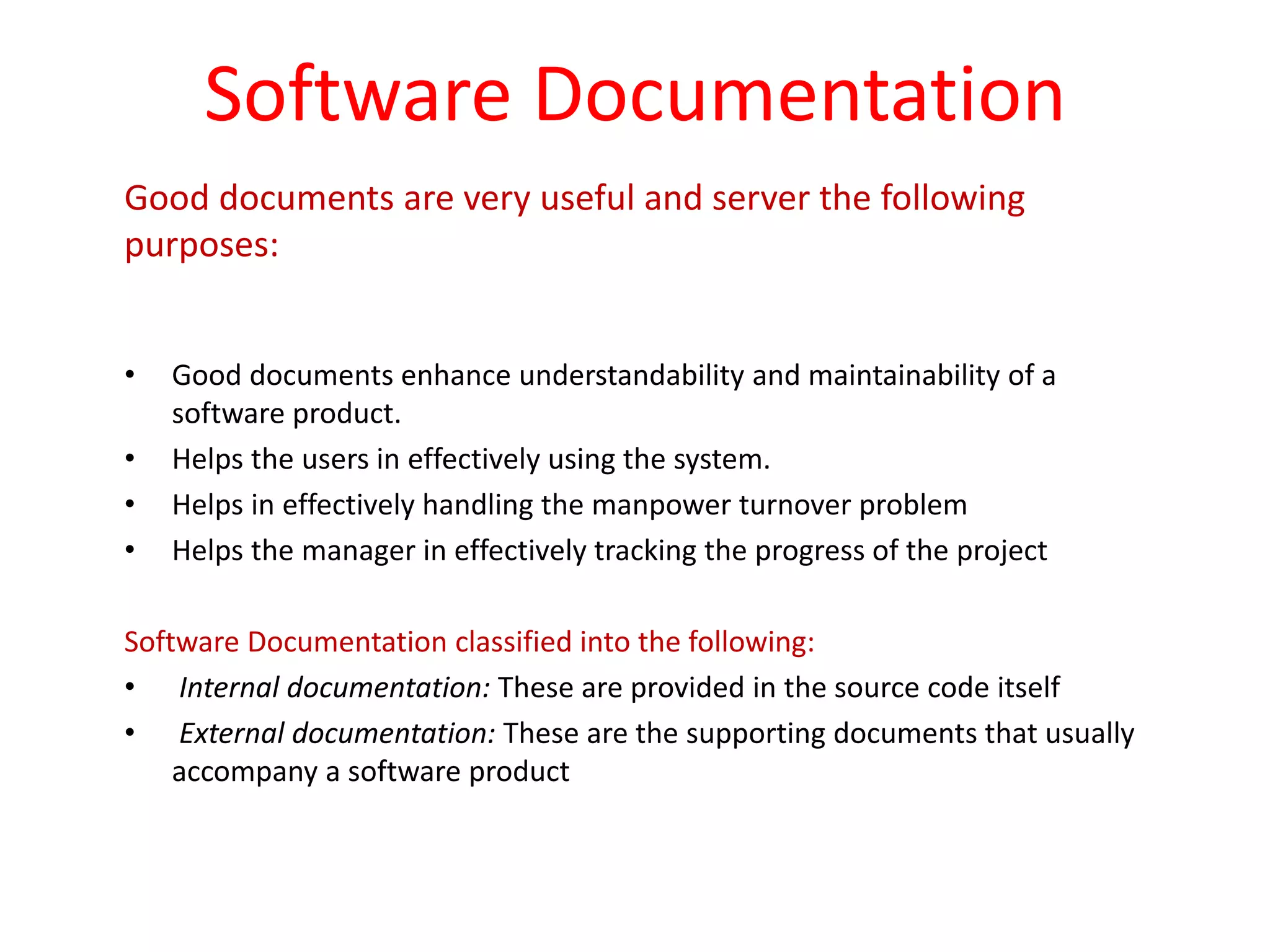
![Program Testing
Testing a program consists of providing the program with a set of test inputs
(or test cases) and observing if the program behaves as expected.
Aim of testing
The aim of the testing process is to identify all defects existing in a software
product.
Some commonly used terms associated with testing are:
• Failure: This is a manifestation of an error (or defect or bug).
• Test case: This is the triplet [I,S,O], where I is the data input to the system,
S is the state of the system at which the data is input, and O is the expected
output of the system.
• Test suite: This is the set of all test cases with which a given software
product is to be tested.](https://image.slidesharecdn.com/se5-200927224542/75/Coding-SDLC-Model-10-2048.jpg)
